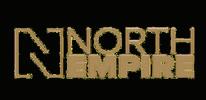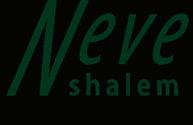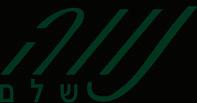AND
KASHRUT

JACOBS CENTER


AND
KASHRUT













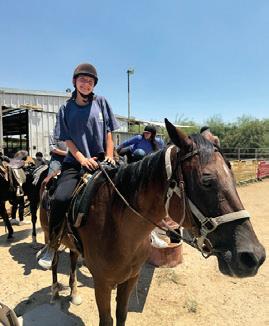







OU DIRECTOR OF ANGLO ENGAGEMENT
DIRECTOR, OU KOSHER ISRAEL DEPARTMENT
DIRECTOR, THE GUSTAVE AND CAROL JACOBS CENTER FOR KASHRUT EDUCATION/ DEPUTY RABBINIC DIRECTOR OU KOSHER ISRAEL DEPARTMENT
OU ISRAEL GUIDE TO PESACH
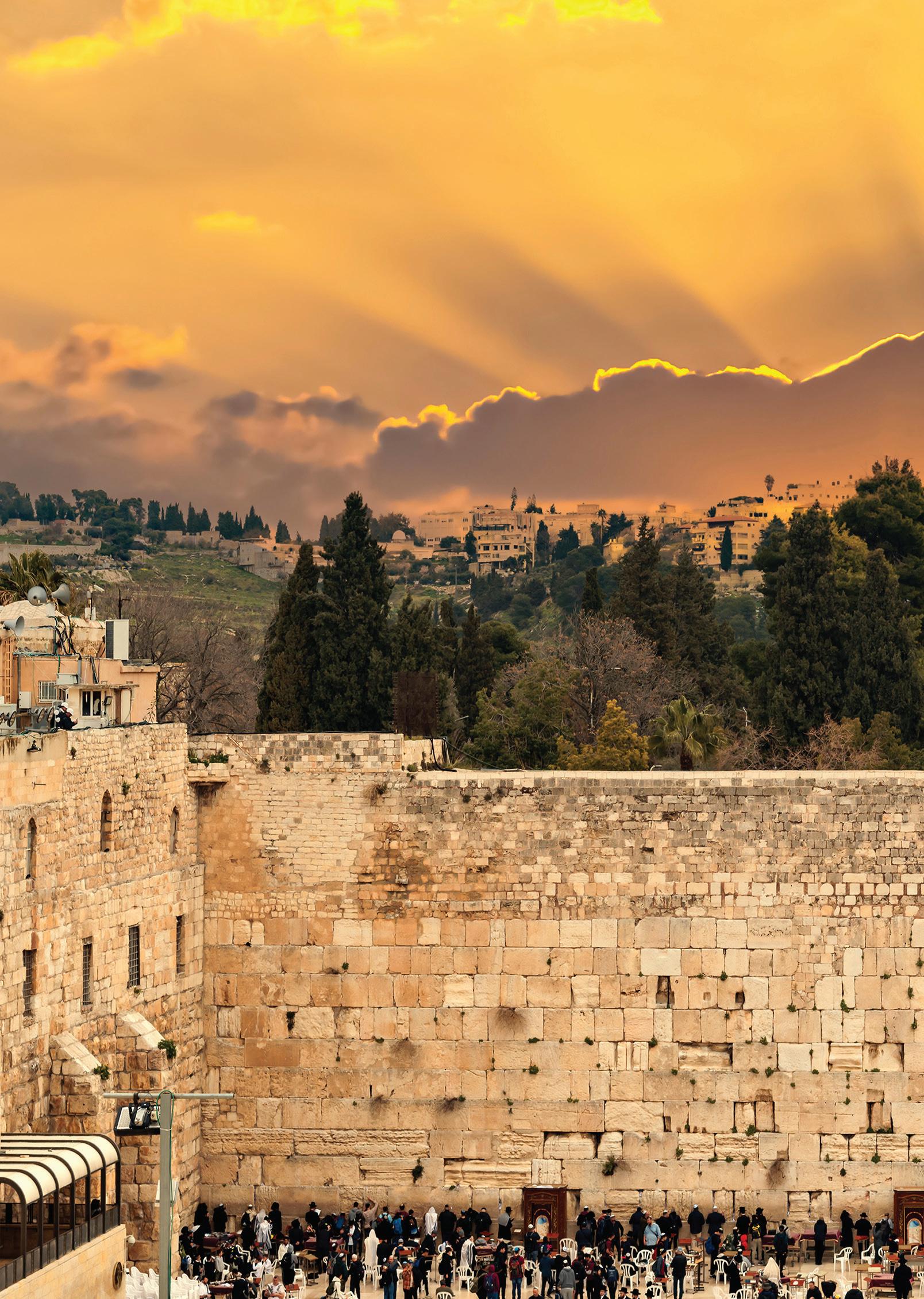

The central mitzvah of the Passover holiday, after which the festival is named, is the korban Pesach--the Paschal sacrifice. Brought during Temple times, the korban is both an individual offering, which every Jew is obligated to participate in, as well as a communal offering (bekinufya), i.e., it is offered individually by the entire community together. This dual nature is symbolic to the essence of the Yom Tov.
Pesach is the time of our redemption. An individual Jew by himself is not guaranteed redemption, for the promise of redemption belongs only to Klal Yisrael as a whole, which will inevitably be redeemed. Hence, each individual’s redemption depends on his participation in the community; if he is part of the community, he too merits salvation and redemption.
This may explain, as well, the reason the korban Pesach is eaten in a chaburah (group)—a requirement not found regarding other sacrifices. It may be precisely so that individuals join together in fulfilling the requirement to bring the korban Pesach. Because the korban Pesach has a communal dimension, it is not fitting that one person alone bring it as a purely private offering.
The korban Pesach thus represents the redemptive power of the Jewish people standing together in unity. By joining together, individuals attach themselves to the redemption that is promised to the nation as a whole.
The OU is an organization through which the efforts of its devoted individual staff members contribute to the strength of the entire community. This year, once again, OU Kosher presents our widely-read Passover Guide, just one example of the herculean efforts of our dedicated staff to not just administer and supervise tens of thousands of factories around the globe, but also to provide resources and information for kosher consumers and enable the proper observance of Passover throughout Klal Yisrael. Wishing all a chag kasher vesame’ach, and next year in Jerusalem!
Rabbi Menachem Genack CEO OU Kosher


The holiday of Pesach represents the birth of the Jewish nation. Most Jewish holidays include food as a component, however the special kosher for Pesach foods are at the very center of this Yom Tov celebration. This signals the fundamental place that kashrut plays in the establishment, preservation and advancement of our people.
In one of the final dialogues that Pharaoh shares with Moshe, and following seven difficult plagues, the Egyptian monarch finally accedes to the demand that he permit the children of Israel to worship its Creator in the desert. “Who from amongst you are those that you will take with you on this pilgrimage,” asks Pharaoh.
Moshe responds: ““With our youth and with our elders we will go, with our sons and with our daughters, for it is a holiday of Hashem for us.” Jewish holidays are inclusive family events, nowhere more pronounced than at the Pesach Seder. For all our internal differences as a people, kosher food can be a great unifier. It can bring us together and bridge the ideological, partisan and generational divisions that sometimes separate us.
Even after one hundred years, OU Kosher remains the global leader in kosher certification. While this is clearly the case in a quantitative matrix - qualitatively OU is also at the forefront as the cutting-edge leader of the world of kashrut. With more than fifty rabbinic coordinators in our NY headquarters and many hundreds of rabbinic field representatives around the world, our vast collective experience and expertise help us to serve not just as the purveyor of kosher certified products worldwide, but also the ultimate resource to the entire world of kosher.
We thank you for the trust that you have placed in OU Kosher and look forward to continuing serving all of Klal Yisrael in providing it the highest levels of kashrus that are both reliable and reasonable.
Chag Kasher v’Sameach
Rabbi Moshe Elefant
COO OU Kosher


Welcome Everyone,
As I write this letter, we are still grappling with the immediate aftermath of October 7th. So many of our loved ones are fighting for the safety of Jews in Israel and around the world.
While baruch Hashem many of our brothers and sisters that were taken hostage by our enemies have been returned, way too many are still preparing for the festival of freedom in captivity. We daven from the depths of our hearts for all of the hostages to return, and bezrat Hashem by the time you read this they will be home. We daven from the depths of our hearts that those injured, displaced from their homes and suffering in other ways from this war be blessed with freedom from their suffering. We pray for geulah on a personal level and on a national level for Am Yisrael. We also thank Hashem for all of the hidden and obvious miracles the Jewish people are experiencing every single day.
Many of you reading this Pesach Guide live in Israel and many of you are visiting. Whichever group you are a part of, I want to take this opportunity to say thank you. Thank you to those of you who are serving and who sent your spouses or children to serve in the IDF. Thank you for all of the volunteering and checking in on your relatives and friends. Thank you to everyone who intensified your Torah learning and tefilot for the success of Am Yisrael this year. Thank you for coming this Pesach in a show of solidarity standing up for the Jewish people. “B’chol dor v’dor omdim aleinu le’chalotanu v’HaKadosh Baruch Hu matzilenu mi’yadam,” in every generation there are enemies that arise to destroy us, but Hashem saves us from their hands.
This Pesach Guide was published due to the tremendous efforts of Rabbi Ezra Friedman and Rabbi Yissachar Dov Krakowski who run OU Kashrut here in Israel. We are pleased to once again be presenting this guide in response to the many requests we’ve received to provide a guide that will instruct people on how to overcome the challenges they encounter here in Israel in keeping the level of kashrut that they are accustomed to and desire. This guide is one of the many initiatives of OU Israel’s Gustave & Carol Jacobs Center for Kashrut Education which helps people better understand and keep kosher in Israel. Other resources include kashrut shiurim, articles in Torah Tidbits, educational videos, a hotline and more.
OU in Israel provides programs for the English-speaking population all across the country—including shiuirm, holiday programing, tiyulim, Torah Tidbits, NCSY, Yachad, and JLIC—as well as the work we are doing with 10,000 at-risk from Kiryat Shmona in the north to Dimona in the south. I hope you get a chance to see the incredible impact that the OU is having here both on a program level and a kashrut level.
We at OU Israel wish all of you an uplifting and incredible Pesach. May this month Nissan usher in the geulah sheleima
Chag kasher ve’sameach!
Rabbi Avi Berman


Each week, we add 10+ high caliber shiurim to our OU Israel Shiurim YouTube and Instagram pages. Search OU Israel Shiurim to learn Torat Eretz Yisrael anytime from anywhere.




The Gustave and Carol Jacobs Center for Kashrut Education was established in the fall of 2019, in loving memory of Gustave and Carol Jacobs z”l, by their loving children Aviva and Joseph Hoch, and Judy and Mark Frankel. Gustave and Carol were active lay leaders of the Orthodox Union and numerous other Jewish organizations for many decades. Working with the OU, they became pioneers of kashrut in North America, ensuring that for generations to come Jews in America, and subsequently around the world, would have easy access to quality kosher food. The goal of the Gustave and Carol Jacobs Center for Kashrut Education is to help English-speaking olim and tourists understand the complexities of
kashrut in Israel. Directed by Rabbi Ezra Friedman a close disciple of Rav Zalman Nechemia Goldberg, and Rav Emeritus of the Musar Avicha Shul in Maale Adumim, the Gustave and Carol Jacobs Center for Kashrut Education educates tens of thousands of people weekly about kashrut observance through:
Shiurim all over Israel engaging videos weekly column in the Torah
Tidbits leaflet
kashrut guides
kashrut hotline Kashrut hotline
(including over 16 WhatsApp groups!) workshops
other educational initiatives
In addition to the Gustave and
Carol Jacobs Center for Kashrut Education, the OU has a very active Kosher Israel Division. Our 180 kosher-certified companies in Israel include Osem, Strauss-Elite, Tenuva, and many more. We have numerous mashgichim providing guidance and service for factories, hotels, and restaurants. Current initiatives include partnership with the Army Chief Rabbinate, a large kashrut portfolio with Israeli importers and expanding our certification into the Israeli local market. All this is done in close coordination with global OU Kashrut. We are here to provide our communities with kashrut education, in addition to the highest standards of kosher food. We take great pride in our work with educational institutions and communities.
We are here to provide our communities with kashrut education, in addition to the highest standards of kosher food. We take great pride in our work with educational institutions and communities.


INTERESTED IN LEARNING MORE?
We are happy to arrange shiurim and hands-on workshops for yeshivot, seminaries, kollelim, schools, and shuls.
We can be contacted here in Israel at 02-560-9122 or efriedman@ouisrael.org.

























Among Passover’s different names, the moniker Zman Cheiruteinu, the Time of Our Freedom, seems paradoxical, considering the extensive energy, planning and physical work invested in preparing for the holiday. And yet, these incredible efforts help us to truly appreciate what it means to be free; when we finally sit down for the first Seder with family and friends after cleaning, cooking, toiveling, and running errands, we can at last enjoy the fruits of our labor to their fullest.
The following overview serves as a handy refresher about the mitzvot and customs related to Pesach. For any questions about Pesach observance, please consult an Orthodox rabbi.
When is Passover this year, and when is the latest I can eat chametz?
Passover takes place from the 15th through the 21st of the Hebrew month of Nisan.
This year, Pesach 2025 falls on Motzei Shabbat, Saturday night, April 12, and lasts through Saturday, April 19.
It is forbidden to eat chametz as of Shabbat morning, April 12.
See page 4 for the corresponding zmanim (times).
What exactly is chametz?
Chametz, often referred to as “leaven,” is any food created by allowing grain (specifically wheat, oat, spelt, rye or barley) and water to ferment and rise. Common examples of chametz include bread, crackers, cookies, pretzels and pasta.
Even foods with minute amounts of chametz ingredients, or foods processed with utensils or machinery that are used for chametz, are not permissible for Pesach use. Practically speaking, any processed food not certified as kosher for Passover may include chametz ingredients and should not be eaten on Pesach.

Is my home kosher for Passover?
Keeping a year-round kosher home is not the same as a “kosher for Passover” home.
On Passover, eating chametz, or having chametz in your possession, is forbidden. This mitzvah takes up the bulk of our Pesach preparations, as we clean and search our homes, cars and offices to remove all remnants of edible chametz

Before Pesach, it is customary to give Maot Chitim (literally, money for wheat) to the needy to help them to purchase matzot and other food for Pesach. OU’s Maot Chitim campaign efforts enable families affected by poverty to celebrate the holiday with dignity. Visit ou.org/passover-donate to participate in this meaningful mitzvah.
One’s entire home and car (and office, if you do not sell your chametz there) must be cleaned of all edible chametz. Check and clean out any place that may have come into contact with chametz during the year. (If you have kids at home, this might mean under beds and in closets, and in knapsacks.) Either clean all toys or set aside designated clean toys.

Rather than disposing of all of one’s chametz, it is customary to sell it to a non-Jew. Place chametz in a specially marked and sealed place, e.g.: a room or closet. That storage space can then be leased to a non-Jew for the duration of the holiday. Ask your Orthodox rabbi to help you arrange this. For guidelines on what can and should be sold, as well as tips for those whose custom is to not sell chametz, see page 36.

Year-round cooking and eating utensils should not be used, and separate utensils should be purchased exclusively for Pesach use. (In some cases, year-round utensils may be kashered for Pesach, in consultation with a rabbi.)
Ta’anit Bechorot - The Fast of the Firstborns
This year, Thursday, April 10, is a fast day for firstborn males. During the tenth plague, all the firstborns males in Egypt died. G-d passed over the homes of the Jews and spared their firstborns. To commemorate this, firstborns fast on Erev Pesach.
Many congregations conduct a siyum. (The conclusion of a portion of Torah learning is a celebratory occasion that allows for a seudat mitzvah, a ritual feast). A siyum exempts firstborn males from fasting altogether.
Bedikat Chametz – the search for chametz
Using a candle or flashlight, we inspect our homes for any chametz that we might have overlooked. This year, Bedikat Chametz will take place on Thursday evening, April 10, after dark. Kol chamirah should be recited. Any chametz found should be set aside to be burned the next morning and the chametz that one plans to eat on Shabbat is also set aside.

Biur Chametz - burning the chametz
Most years, we burn the chametz on the morning of Erev Pesach. Since Erev Pesach falls on Shabbat this year, we will burn the chametz on the morning of Friday, April 11. Kol chamirah is not recited and rather will be said on Shabbat Morning.
Have you combed through every inch of your home for chametz, covered what may seem like every inch of your kitchen with aluminum foil, and searched every corner? You’re ready for the next step: Not all the days of Passover are the same or have the same laws.
The first day and last day of Pesach.
The first day (sundown, Saturday night April 12th through nightfall Sunday April 13 th ) and the last day (sundown, Friday night April 18 th through nightfall Saturday night, April 19 th ) are observed with Shabbat restrictions on work and creative activity.
The intermediate days of Pesach (Monday night, April 14 – Friday, April 18) are considered “semi-festive.” Although they are the “weekdays” of the holiday, not all work, activities and crafts are permitted. The laws of Chol Hamoed are nuanced. An Orthodox rabbi will be able to give you detailed guidance. For more on the laws of Chol Hamoed, please visit oukosher.org/ cholhamoed
The Mitzvot of the Seder
There are two Torah obligations and five rabbinical obligations to perform during the Seder.
Torah-based Mitzvot:
1. Relating the story of the Exodus (Maggid—reading from the Haggadah).
2. Eating matzah.
The Seder Plate
The Seder plate is arranged with symbolic foods that follow the order of the Haggadah. The prepared plate is placed in front of the leader of the Seder, who gives out the various foods to each participant.
What do we put on the Seder plate?
Charoset: a mixture of apples, nuts, wine, and cinnamon, symbolizing the bricks and mortar of ancient Egypt
Karpas: a vegetable (customarily parsley, radish, potato, or celery)
Maror: bitter herbs (may consist of romaine lettuce, endives, or pure horseradish)
Beitzah: a roasted egg
Zeroa: a piece of roasted or meat or poultry. There should be a kezayit of meat on the bone
Salt water: Place a bowl of salt water for dipping the karpas near the Seder plate.
Matzah
Three whole matzot are placed next to the Seder plate. We are commanded to eat matzah three times during the Seder:
1. At the start of the Seder meal (with a special bracha)
2. For korech (Hillel sandwich) together with the maror
3. For the afikomen (at the end of the meal)
Rabbinical Mitzvot:
1. Arbah Kosot: Drinking four cups of wine.
2. Maror: Eating bitter herbs.
3. Hallel: Reciting psalms of praise.
4. Afikoman: Eating an extra piece of matzah for dessert as a reminder of the Pesach offering.
5. Demonstrating acts of freedom like sitting with a pillow and leaning to the left when eating matzah and drinking wine.
Maror — Bitter herbs
Everyone is obligated to eat bitter herbs twice at each Seder:
1. A kezayit of maror, dipped in charoset
2. A second amount inside the matzah sandwich (korech)
Maror must be raw and unpreserved. Therefore, commercially prepared grated horseradish, which is packed in vinegar, may not be used for the mitzvah. For details on the specific amounts and requirements see “Sizing Up the Seder” on page 18.
This year, one should prepare ground maror before Shabbat and keep it in a sealed jar until the Seder to preserve the strength of the maror. If one is using romaine lettuce, it should be checked and dried before Shabbat. If it was not done before Shabbat, please see “When Shabbat is Erev Pesach” on page 20.
Telling the story of the Exodus and singing Hallel
We encourage young children to participate in the Seder to the best of their abilities. It is customary for the youngest person at the Seder to ask Ma Nishtana, the Four Questions.
We close the Seder with Hallel, which praises G-d and His special relationship with the people of Israel. The Seder traditionally concludes with singing (and dancing to) several lively songs that celebrate our treasured relationship with G-d.
All dietary laws and restrictions remain in effect until nightfall after the eighth day of Pesach.
Chametz that was properly sold may only be eaten once the resale is confirmed by your rabbi (agent). Chametz that was in the possession of a Jew during Pesach is forbidden for consumption by any Jew, even after Pesach.
u Torah Initiatives
Hundreds of inspirational Shiurim by world renowned Torah personalities in over a dozen locations
u Women’s Division
u The Bais in memory of Mrs. Charlotte Brachfeld a”hEvening Beit Midrash program for Men
u Gustave & Carol Jacobs Center for Kashrut Education
u Torah Tidbits is the largest week ly English language Torah publication in Israel

For 45 years, OU Israel has helped ensure English-speaking olim and visitors acclimate to Israeli society, feel at home and contribute to the State of Israel.
u Mother-Daughter holiday & Bat Mitzvah programs
u NCSY Israel for English-speak ing teens
u Yachad Israel for families with children who have special needs
u Camp Dror for campers entering 5th-11th grades

u ATID for lone olot in their 20s
u NextGen for young women (single & married) in their 20s-40s
u Young Professionals net work for single olim
u JLIC builds vibrant communities for students & young olim across 10 cities
u Leil Yom HaA ztmaut musical Tefila
u Yom Yerushalayim musical Shacharit
u Community Torah Summits




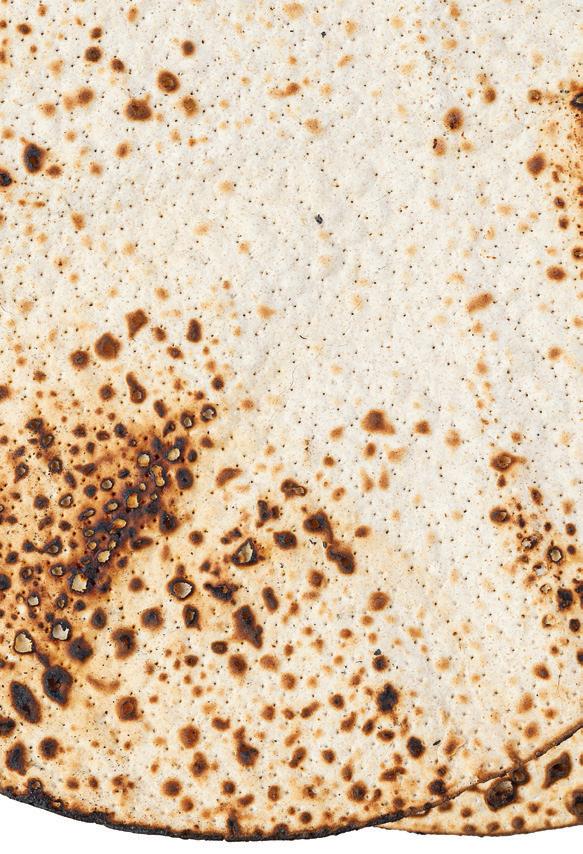
TALMUDIC MEASURE OF VOLUME
RAV CHAIM NOEH
RAV MOSHE FEINSTEIN
CHAZON ISH

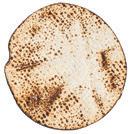


K’ZAYIT
29 CUBIC CM (1 FL. OZ.)
43.2 CC (1.5 FL. OZ.)
50 CC (1.7 FL. OZ.)
K’ZAYIT 19.3 CC (.7 FL. OZ.) 32 CC (1.1 FL. OZ.) 33.3 CC (1.1 FL. OZ.)
RIVI’IT**
3 FLUID OUNCES
3.3 FLUID OUNCES
5.07 FLUID OUNCES
* These measurements are approximate amounts since matzot vary in thickness. Handmade matzot can be considerably thicker than machine-made matzot, or vice versa
** For the first three cups, one must drink more than half the rivi’it. One should drink the entire fourth cup so as to be able to recite a bracha achrona
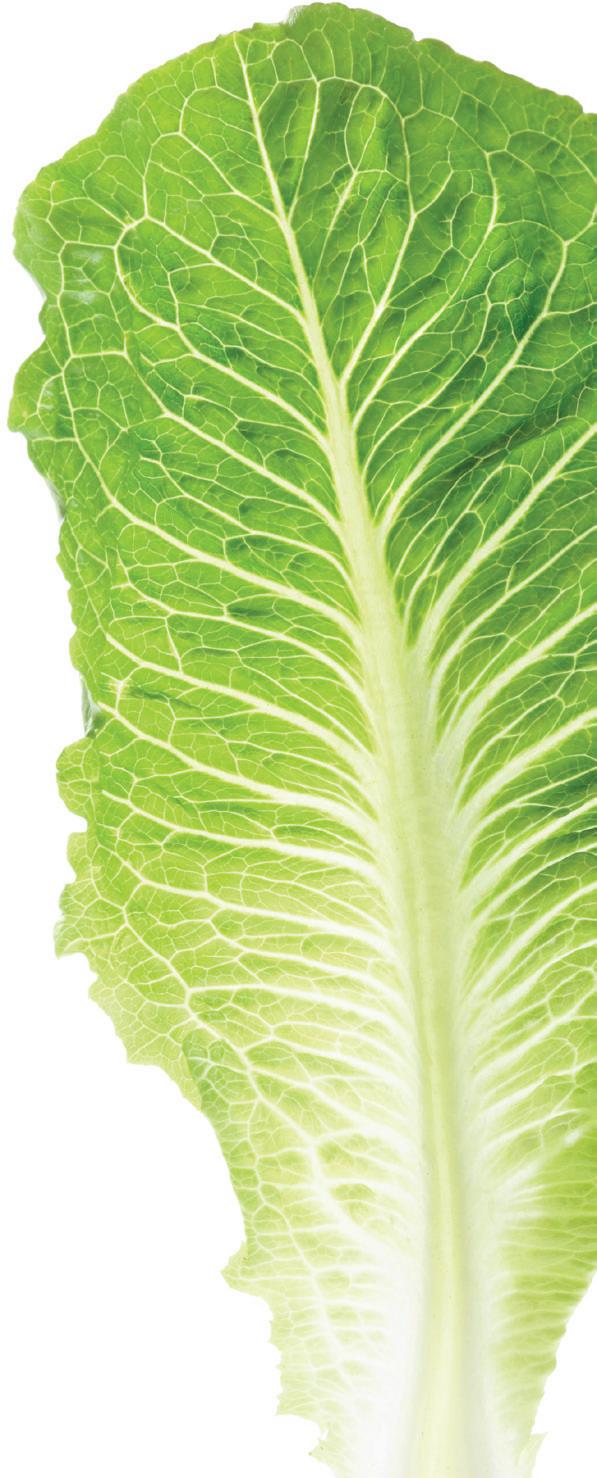
(1 oz. by weight)
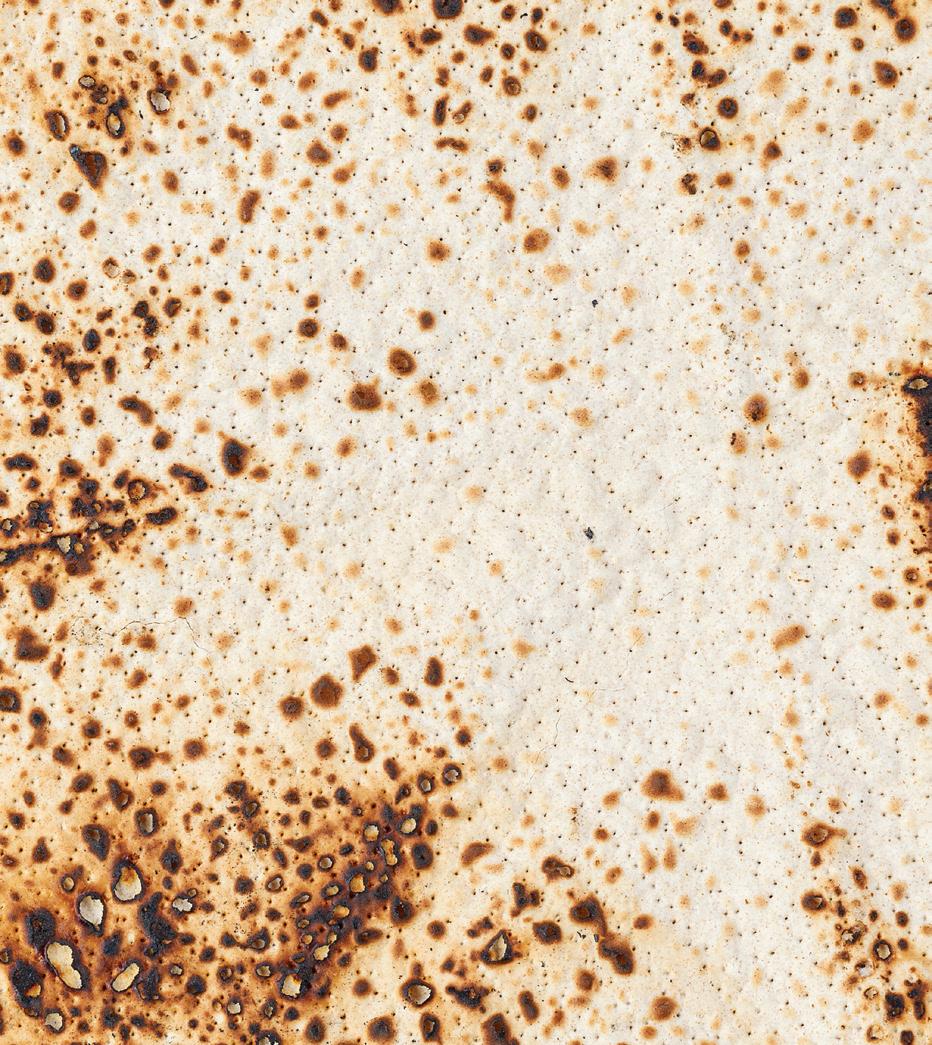
(Leaves: 1 oz. by weight)
IF GROUND HORSERADISH:
volume of 1.1 oz./32 grams.If this is difficult one can use .7 oz./19 grams.
IF ROMAINE STALKS
(.75 oz. by weight)
Enough to fill 3” x 5” area

KORECH 4” X 7” (.64 oz. by weight)
By Rabbi Moshe Zywica
This year, erev Pesach falls on Shabbat.
No need to panic. With proper planning, you’ll have the opportunity to come to the Seder well rested, relaxed, and to fulfill the mitzvot of the evening with more feeling and greater enthusiasm. Here are some of the important things to know about the day.
It is permitted to eat chametz Shabbat Morning until the proper halachic time noted on page 4, yet we still burn the chametz searched for on Thursday evening (April 10) early on Friday morning (April 11). This is done to avoid confusion in years when erev Pesach does not fall on Shabbat. Yet, Kol Chamira (a statement of nullification of chametz in our possession), which is normally said while actually burning the chametz, is not said on Friday, but rather on Shabbat morning (April 12) before the end of the fifth halachic hour of the day. (For your local time, see Halachic Times for Pesach on page 4).
Remember, not all chametz will be burned on Friday morning. We will need, and are allowed to consume, chametz (challah) on Shabbat.
Other erev Pesach restrictions, such as omitting Mizmor l’Todah and Laminatzai’ach from shacharit; refraining from doing laundry and taking haircuts after chatzot (midday); and koshering pots and pans after chatzot are all still allowed since Friday is not erev Pesach.
This year the custom is for firstborn males to fast on Thursday. We move the fast from Friday to Thursday to avoid starting Shabbat while fasting. Bedikat Chametz (the search for chametz), as mentioned above, is performed Thursday evening with a beracha. If it is too difficult to fast until after Bedikat Chametz, it is permissible to snack before beginning the bedikah.
As in any other year, firstborn males may participate in a siyum on Thursday, which would exempt them from fasting altogether. According to the Yalkut Yosef Moadim, (in the section on Taanit Bechorot 19), the rule for Sephardim is that this year a father is not required to
attend a siyum on behalf of his firstborn son if the son is still a minor.
It is preferable that Seder preparations (the shank bone, charoset, maror, roasted egg, saltwater and checking the romaine lettuce) be completed on Friday, since it is prohibited to prepare on Shabbat for the next day (hachana). Even a nap on Shabbat might be considered hachana if one verbalizes that it is being taken with the intention of remaining alert and awake for the Seder. While it would be permitted to prepare some Seder items on Saturday night, that would undoubtedly delay the start of the Seder. Since so much of the Seder focuses on
educating children and their experience of the Seder with their families, it is important to start the Seder as soon as possible before children fall asleep.
According to the Vilna Gaon, horseradish should be grated immediately before the Seder so that it will be sharp. Others say it should be grated before Shabbat and stored in a sealed jar to maintain the sharpness as much as possible.
If you forgot to prepare horseradish before Shabbat and would need to grate on yom tov, the grating should preferably be done with a shinui (deviation, such as grating on a paper towel or turning the grater upside down). Romaine lettuce that requires checking for infestation should be checked before Shabbat, since it is a process that shouldn’t be rushed. It is important to drain and/or dry the lettuce very well, since water might accumulate in the storage container, and any parts of the lettuce that soak in water for more than twenty-four hours may not be used for maror. If a person needs to check lettuce on yom tov, the thrip cloth method should be
avoided due to various halachic considerations regarding yom tov
If salt water was not prepared in advance, it can be made on yom tov, though some recommend using a shinui by putting the water in the vessel before the salt. If charoset needs to be prepared before the Seder, the fruit may be diced on yom tov, but the nuts should be ground with a shinui such as crushing in a bag. No deviation is needed when adding the wine.
The shank bone and egg roasted on yom tov offer a unique set of restrictions. If roasted on yom tov, they must be eaten on that day of yom tov; and, since we refrain from eating roasted meat or chicken at the Seder, the shank bone that was prepared Saturday night must then be eaten at the Sunday daytime meal. While the egg can be eaten at the seder. In general, we may not prepare food on the first day of yom tov if the intention is to consume it on the second day or after yom tov; therefore, all Seder foods should either be prepared before Shabbat or on each Seder night and consumed that night or, for the shank bone, at the following luncheon meal.
It is permitted and expected that challah and possibly chametz foods will be eaten both on Friday night and at the early start of the Shabbat day meal. Most will prepare kosher for Pesach foods and eat on Pesach dishware with the challah being the outstanding chametz
The challah should be cut and eaten over disposable napkins or paper towels to separate it from the Pesach food and dishes. It is recommended to wash your hands and rinse your mouth after eating the challah and commencing with the meal on Pesach dishes. Crumbs from the challah, dishes, table, or floor should be swept up and flushed down the toilet before the end of the fifth hour on Shabbat morning.
Remember to clean the broom of crumbs afterward. Sephardic communities traditionally recite haMotzi on water challah throughout the year, which can result in significant crumbs. Therefore, Sephardic poskim recommend using pita bread on Shabbat to avoid this issue.
Larger pieces of chametz may be broken into smaller pieces and flushed as well. Alternatively, large pieces of chametz may be placed in outdoor garbage pails, provided there is an eruv, but the chametz must be rendered inedible by pouring bleach or ammonia over the entire surface of the chametz. These fluids must be designated for that use before Shabbat. Otherwise, they would be muktzah.
It is permitted to brush your teeth with a dry toothbrush that was designated for Shabbat use to rid your mouth of chametz.
If you are hesitant to introduce challah into your kosher for Pesach home, you can use kosher for Pesach egg
matzah for lechem mishnah. Ordinarily, the bracha for egg matzah is Borei minei mezonot. However, Rav Moshe Feinstein, zt”l, writes (Igros Moshe) that if egg matzah is used for lechem mishnah for a Shabbat meal, the bracha is hamotzi
It’s important to eat at least a k’baitza (a little more than two ounces) of egg matzah, in addition to other foods that will be served at the meal, to substantiate the meal and justify the hamotzi. However, for Ashkenazim, the egg matzah—like challah—can only be eaten during the time frame that chametz can be consumed. According to the opinion of the Chazon Ovadia (Laws of Erev Pesach that falls on Shabbat, footnote 11), the rule for Sephardim is that you would be required to consume four baitzim (approximately six ounces) in order to say hamotzi However, due to the difficulty of this requirement, it is not recommended.
Now that we’ve covered the before, and most of the during, of this most unique Shabbat, how do we end it? Can we eat a proper seuda shelishit? If so, how?
Most Poskim say that seuda shelishit should be eaten throughout the year after midday, and some maintain that bread must be eaten at the meal.
Under normal circumstances, on a regular Shabbat, we can eat seuda shelishit on Shabbat afternoon following mincha using lechem mishnah bread, as we do at the other meals on Shabbat. That fulfills the mitzvah of Shabbat’s third meal in the best possible way – satisfying both requirements of eating bread and eating it after chatzot (midday). Alas, this is not possible when Shabbat occurs on erev Pesach when we; 1) are not permitted to eat chametz — bread or egg matzah beyond four hours into the day, and 2) cannot eat regular matzah at all the entire day.
To fulfill the requirement for the seuda shelishit meal this year, one should eat fish, meat, or cooked fruits and vegetables.
Since there are opinions that seuda shelishit can be fulfilled earlier in the day, many will also divide the morning meal into two parts. We can recite Kiddush and haMotzi, eat one course and then recite Birkat Hamazon. After a break of one-half hour, we can wash again, say haMotzi, eat the rest of the meal and then recite Birkat Hamazon. Once again being mindful that the challah or egg matzah that would be used for lechem mishnah is consumed before the fourth hour.
Sephardic customs provided by Rabbi Rachamim Churba, Rabbi of Homecrest Congregation.
If
you are hesitant to introduce challah into your kosher for Passover home, you can use kosher for Passover egg matzah for lechem mishnah. Ordinarily, the bracha for egg matzah is Borei minei mezonot. However, Rav Moshe Feinstein, zt”l, writes
(Igros Moshe) that if egg matzah is used for lechem mishnah for a Shabbat meal, the bracha is hamotzi.
By Rabbi Eli Gersten

The Haggadah’s final chapter, Nirtza, is comprised of a series of poems. Some are written in Aramaic and are enigmatic and mystical in nature. In the spirit of the Seder, I present four questions and answers that may help us to better understand this part of the Haggadah:
1What does Nirtza mean?
The word Nirtza means pleasing. In this context, we recite it as a prayer that Hashem will find our Seder service pleasing, which we emphasize in Nirtza’s opening paragraph, “Chasal Siddur Pesach K’hilchato”; We have completed the order of the Pesach according to its laws, and Hashem should therefore bless us with the ability to serve Him fully with our return from Exile.
2
How did Nirtza get its name?
In many early editions of the Haggadah, before “Chasal Siddur Pesach” there is a preceding statement: “Hashem will surely find your actions ‘pleasing’ if you have followed this order.” It seems that this statement was added as an explanation for the word Nirtza. The term Nirtza, pleasing, does not refer to the poetry within the chapter, rather, it refers to our wish that Hashem find all the chapters recited during the entire Seder pleasing.
3
What is Nirtza’s connection to the story of Yetziat Mitzrayim, and the main structure of the Haggadah?
The original text of the Haggadah ended with Hallel, and did not include the piyyutim of Nirtza. The Rambam, for example, ends his explanation of the Seder with Hallel and its accompanying cups of wine. However, the tradition has been to conclude the Haggadah with “Chasal Siddur Pesach” and other piyyutim, each according to their tradition. Commentators maintain that one should not change the piyyutim that one’s family customarily recites, for they are considered a minhag, which is binding. However, if one is not well, or has difficulty staying up beyond Hallel, one may go to sleep after Hallel. The Chasam Sofer’s wife would go to sleep after Hallel, and


certain communities today do not recite any piyyutim following it.
The opening paragraph of Nirtza, “Chasal Siddur Pesach”, was adapted from a piyyut written by Rav Yosef Tov Olam in the 11th century. The original piyyut was intended to be recited on Shabbat Hagadol. Its original meaning was that in the merit of having completed our preparations for the Seder, we should be able to fulfill all the mitzvot of Seder night.
Some commentators, including the Maharal MiPrague, believe that Nirtza is not an independent section of the Haggadah, since it does not seem to fulfill a specific obligation like the other chapters. They explain that Nirtza is a continuation of the praises of Hallel. According to this view, we can understand that the purpose of Nirtza’s poetry is to offer further praises to Hashem. The piyyutim, such as “Adir Bi’melucha” (Mighty in His Kingship), and “Adir Hu” (Mighty is He), which enumerate the praises of Hashem, clearly follow this approach.
However, other commentators, including the Chayei Adam, count Nirtza as a separate section which continues the fulfillment of the obligation to discuss Yetziat Mitzrayim the entire night until one is overtaken by sleep. This includes the recitation of Shir HaShirim (The Song of Songs), which is printed at the end of many Haggadahs. The piyyutim, such as “Vayehi B’chatzi Ha’lyla” (And it was at Midnight), “Zevach Pesach,” which recount the numerous times throughout the generations that Hashem has redeemed us, as well as Shir HaShirim, which speaks of our exile and redemption, seem to follow this approach.
The last two piyyutim commonly recited at the Seder are “Echad Mi Yodeya” and “Chad Gadya.” The Chida writes very harshly against those who might trivialize or disparage these piyyutim, which have inspired a multitude of interpretations from some of the greatest rabbis.
According to the Chida, one great Kabbalist wrote 10 mystical
explanations for “Chad Gadya.” The Vilna Gaon also wrote a famous interpretation of “Chad Gadya,” which traces Jewish history from the purchase of the birthright (symbolized by the goat) by our forefather Yaakov (the father), to our descent into Egypt (the dog), to our redemption via Moshe’s staff (the stick), until our ultimate redemption by Hashem.
4Why
does Nirtza officially mark the Seder’s end?

Nirtza should not be understood as the end of the Seder, but rather a transitional step. With the completion of Hallel, we have finished reading the scripted praises and narratives of the Haggadah. Now is our opportunity to offer our own insights into Yetziyas Mitzrayim, and to praise Hashem with songs, especially Shir HaShirim, for as long as we can, until we are overtaken by sleep.
May our service be found pleasing.
You packed bags for soldiers, you wrote your senators, you attended rallies, you picked vegetables, you davened...
Your vote for OIC-Mizrachi ensures that Torah values and observance and devotion to the State of Israel are given a strong voice in Israel’s powerful and influential National Institutions, inspiring connection, generating kiddush Hashem, and meaningfully impacting Israel and the Jewish world.






By Rabbi David Bistricer
Beyond the conventional methods of growing vegetables in an open field with soil, new technologies are enhancing the agricultural industry. For example, innovations have been designed to produce higher-quality products with greater consistency, and a longer shelf-life. While these advancements have created agricultural revolutions that are much to the consumers’ benefit, they also have their own set of kashrus implications. Here, we will explore the use of indoor-farmed lettuce, to fulfill the mitzvah of maror.
Over time, farms have incorporated new agricultural methods in line with technological advancements. Indoor farming, for example, has become an increasingly popular industry trend. This technique consists of growing plants
indoors in greenhouses, under controlled conditions. Greenhouses are enclosed, transparent structures typically constructed from glass or plastic. Their ability to absorb heat from the sun, while protecting plants from outside elements, has proven to yield more consistent and higherquality products year-round. Although greenhouses are becoming increasingly popular, they’ve existed in some form for centuries.
Indoor vertical farming is a much more recent innovation. This technique typically centers on the use of verticallystacked layers of trays found in both warehouses and greenhouses.

Indoor farming employs multiple technologies: Hydroponics involves growing plants using a water-based nutrient solution, often with an additional growing medium other than soil, such as peat moss or coconut coir, a fiber. Aeroponics is a method of growing plants by suspending roots in the air which are irrigated with a nutrient-dense mist.
Vegetables grown via hydroponics or aeroponics present an interesting question around the appropriate blessing (beracha rishonah) to recite prior to consumption. On one hand, vegetables typically fall into a category of something that is grown in the ground.
It seems, then, that the proper blessing on any vegetable should be borei pri ha’adamah
However, these vegetables are not grown in the ground, but rather through specialized technology with a water-based medium. Therefore, perhaps the proper blessing should be shehakol
This question has been discussed by contemporary halachic authorities, who take different positions on the issue. Some rule
There are numerous halachic authorities that permit using hydroponically grown lettuce for maror at the Passover seder. However, since there is an opinion that appears to suggest otherwise, Rav Yisroel Belsky zt”l maintained that it is proper to use conventionally grown lettuce from soil for the Passover seder.
Consumers should be aware that indoor-grown vegetables may still be exposed to insects, even under controlled conditions. There is OUP certified lettuce for Passover, but those packages that do not have certification should be washed and checked before use.
that the proper blessing should be borei pri ha’adamah 1. The simple reasoning is that the blessing is intended for all vegetables as part of one category and the growing medium should not be a factor. However, others disagree, and suggest that the proper blessing is shehakol 2. Hydroponically grown vegetables in this sense may be compared to mushrooms, which are also not grown in the ground and require a blessing of shehakol 3 . There are numerous halachic authorities that permit using hydroponically grown lettuce for maror at the Pesach seder.4 However, since there is an opinion that appears to suggest otherwise 5, Rav Yisroel Belsky zt”l maintained that it is proper to use conventionally grown lettuce from soil for the Pesach seder.

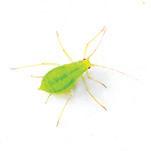



Romaine lettuce is commonly used for maror. Below are step–by-step recommendations on how to properly check romaine lettuce for insects. The basic instructions apply to any kind of romaine lettuce, no matter how it grows:
1. Cut off the lettuce base and separate the leaves from one another.
[1] Shut Shevet HaLevi 1:205) and Teshuvos VeHanhagos 2:149
[2] Chayei Adom (51:17) and Yechaveh
Da’as 6:12
[3] Tractate Berachos 40b
[4] Keren Orah Menachos (70a), Chazon Ish Kelaim 13:16, Mikraei Kodesh, Pesach 2:12, Halichos Shlomo (7:20), Ashrei Haish p. 408
[5] Nishmas Adom Hilchos Lulav 152

2. Soak the leaves in a solution of cold water and soap. The proper amount of soap has been added when some bubbles are observed in the water.
3. Agitate the lettuce leaves in the soapy solution.
4. Spread each leaf, taking care to expose all its curls and crevices. Using a heavy stream of water or sink hose, remove all foreign matter and soap from both sides of each leaf. Alternatively, a vegetable brush may be used on both sides of the leaf.
5. Leaves should be checked over a light box or against strong overhead lighting to verify that the washing procedure has been effective. Pay careful attention to the folds and crevices in the leaf where insects have been known to hold tightly through several washings.
Occasionally, worms may be found in burrows within the body of a leaf. Look for a narrow translucent burrow, speckled with black dots that break up the deep green color of the leaf. These burrows will often trap the worm within the leaf. To rid the leaf of these worms, carefully slit the bumpy part within the burrow with a sharp knife and remove the worm. It is important to note that many of these varieties feature curly leaves with many folds in which the insects tend to hide. It is therefore recommended that they be washed and checked with extreme caution.
An alternative method of checking lettuce that has become increasingly popular involves the use of a mesh cloth. The basic method consists of agitating and soaking leafy produce for a few minutes in cold water containing soap or vegetable wash, and draining the water through a mesh cloth placed between two large strainers. After draining the water, the mesh cloth is placed on a light box to inspect for any possible insects that were dislodged from the produce into the water.
By Rabbi Dov Schreier
After their exodus from Egypt, Am Yisrael enjoyed miraculous manna from heaven for 40 years in the desert. Today, when we celebrate Pesach away from home, we often have access to fresh, frozen, or shelf-stable kosher food of the highest standards, with unprecedented ease. Much planning, effort and logistical know-how on the part of kosher food manufacturers and consumers make that possible.
Airlines, trains and even hotels frequently accommodate travelers’ requests for pre-ordered kosher meals. These meals are often produced at great distances and shipped far in advance. This is often true regarding meals for those who, unfortunately, will need to be in the hospital over Pesach.
While consumers should be especially cautious year-round when ordering, heating, and consuming these prepared meals, extra precautions are necessary during Pesach.
In the kosher foodservice business, as the Chanukah holiday concludes, many turn their attention to preparing food for the other eight-day holiday in the spring -- Pesach. OU Kosher meals are prepared in dedicated warehouses under full-time Rabbinic supervision. Before preparing OU Kosher for Passover meals, facilities undergo koshering procedures. These entail a shutdown of the sites, and the cleaning and sterilizing of equipment by specially trained individuals.
Certain pieces of equipment (i.e. commercial fryers, sheet pans) that cannot be properly koshered, are substituted with dedicated Passover replacements. Following these procedures, the premises remain “Passover-dedicated” for a number of weeks, or even months. Manufacturers often choose a slow season, such as mid-winter, to produce Kosher for Passover food products. Oftentimes, these warehouses revert back to nonPassover foodservice well before the holiday.
Kosher for Passover prepared meals must be clearly distinguishable from the non-Passover fare. As with all packaged products, to avoid consumer confusion, the Kosher for Passover marking must be obvious to both the vendor and the final consumer. Whereas consumers decide which products to purchase for Pesach based on their recognition of products’ kosher for Passover status, in the case of prepared meals, it is often an airline, hospital or hotel middleman who purchases and provides the meal to you.
The consumer is therefore at the mercy of the middleman’s discretion. Accordingly, greater lead time and the ability to make specific requests as far in advance as possible increase the likelihood that a kosher for Passover meal will be obtained by the middleman. Remember that prepared meals (both regular and kosher for

Passover) are often stored in freezers and pulled randomly without much thought given to Pesach’s strict halachic guidelines.
Note that while the packaging of prepared kosher meals is intended to be tamper-proof, packages are not bulletproof. As such, if, during handling, a hot tray becomes punctured, the puncture can materially affect the meal’s kosher status. This is all-themore sensitive on Pesach, when the rules of nullification (bitul 1:60) do not apply.
Even with all of our good intentions and pre-planning, mistakes in obtaining kosher for Passover meals can happen. It’s always a good idea to anticipate this possibility and bring along provisions from home in the event that things do not go as planned.

By Rabbi Gavriel Price
Acommon method of relinquishing ownership of chametz is to sell it, typically through an agent (a rabbi) to a nonJew. The chametz remains in the house, in a closed-off area (e.g. a closet) that has been rented to its new owner. After Pesach, the rental period ends and the agent purchases the chametz back on behalf of the original owner.
This option is time-honored and halachically acceptable. Some, however, do not want to rely on such a sale for chametz that, on a Torah level, we are required to remove from our possession.
The Torah prohibition against owning chametz applies not only to obvious chametz such as bread, pretzels or cookies, but to any product that contains a chametz ingredient that constitutes a k’zayit within that product. Licorice, for example, which
contains a significant amount of flour in its dough, would not be sold according to this position but should, instead, be eaten before Pesach, burned, or otherwise destroyed. Such products are considered chametz gamur — “real” chametz.
If the food is only safek chametz (that is, there is some doubt as to whether it is chametz at all), it may be included in the sale even according to those individuals who avoid the sale of chametz gamur
The foods listed in the chart on page 39 are identified either as chametz gamur and, according to the stringent position, should not be included in a sale, or “not chametz gamur,” and may be included in a sale.
Many people who avoid selling chametz gamur nonetheless have a family custom to sell their whiskey.
The Torah prohibition against owning chametz applies not only to obvious chametz such as bread, pretzels or cookies, but to any product that contains a chametz ingredient that constitutes a k’zayit within that product.
Because of global variations in raw material sourcing, this chart ONLY APPLIES TO PRODUCTS MANUFACTURED IN THE USA
PRODUCT STATUS
Baker’s Yeast Not Chametz Gamur
Baking Powder Not Chametz Gamur
Baking Soda Not Chametz Gamur
Barley (Pearled) Not Chametz Gamur 1
Beer Chametz Gamur
Bourbon Chametz Gamur 2
Brewer’s Yeast Chametz Gamur
Cereals in which wheat, barley, oats, rye, or spelt are primary ingredients Chametz Gamur
Cereals in which wheat, barley, oats, rye, or spelt are secondary ingredients Chametz Gamur
Chocolate (provided there is no wafer or flour as an ingredient) Not Chametz Gamur
Corn Flakes Not Chametz Gamur 3
Cosmetics Not Chametz Gamur
Duck Sauce Not Chametz Gamur
Farfel Chametz Gamur
Flour Not Chametz Gamur 4
Flour, Whole Wheat Not Chametz Gamur 5
Flour, Bleached Not Chametz Gamur 6
Flour, Rye Not Chametz Gamur 7
Flour, Spelt Not Chametz Gamur 8
Flour (as an ingredient in processed food) Chametz Gamur 9
Gefilte Fish Chametz Gamur
Gluten Free Specialty Foods (when containing oats, oat flour, or wheat starch) Chametz Gamur
Ice Cream (with the exception of Cookies & Cream) Not Chametz Gamur
Ices Not Chametz Gamur
Ketchup Not Chametz Gamur
Licorice Chametz Gamur
Maltodextrin Not Chametz Gamur
Maltodextrin (non-GMO) Chametz Gamur 10
Matzah (not for Pesach) Chametz Gamur
Mayonnaise Not Chametz Gamur
Medications
(Capsules, Pills, Tablets) Not Chametz Gamur
Mouthwash Not Chametz Gamur
Mustard Not Chametz Gamur
Nutritional Yeast Not Chametz Gamur
Oats: Instant, Rolled Chametz Gamur
Oatmeal Chametz Gamur
PRODUCT STATUS
Onion Ring Snacks (when containing wheat as an ingredient) Chametz Gamur
Pasta Sauce Not Chametz Gamur
Popcorn Not Chametz Gamur
Potato Chips Not Chametz Gamur
Pickles Not Chametz Gamur
Probiotics Not Chametz Gamur
Rice Krispies Not Chametz Gamur 3
Rum Not Chametz Gamur
Salad Dressing Not Chametz Gamur
Scotch Chametz Gamur 2
Soy Sauce Chametz Gamur 11
Starch (also referred to as food starch) Not Chametz Gamur
Starch (non-GMO) Chametz Gamur 10
Tequila Not Chametz Gamur
Toothpaste Not Chametz Gamur
Vanilla Extract Not Chametz Gamur
Vinegar Not Chametz Gamur
Wheat Germ Not Chametz Gamur 12
Whip Toppings Not Chametz Gamur
1. The processing of pearled barley is mechanical and does not require the use of water.
2. Follow family custom.
3. Although malt in corn flakes and crispy rice products is present at more than one-sixtieth of the product, in standard packaging the malt is less than one k’zayit of the package.
4. Contemporary milling production consists of a tempering process that renders flour only safek chametz and flour can therefore be included in a sale.
5. Whole wheat flour has the status of standard flour and undergoes a process that renders it safek chametz.
6. Bleached flour has the same status as standard flour (the actual bleaching does not render flour chametz gamur)
7. Rye flour does not undergo the tempering process that renders standard flour safek chametz.
8. Spelt flour does not undergo the tempering process that renders standard flour safek chametz
9. Flour as an ingredient in processed food is typically exposed to some form of moisture and should be assumed to be chametz
10. Typically, non-GMO starch and starch derivatives (like maltodextrin) are sourced from Europe, and should be assumed to be chametz
11. Wheat is used in traditional soy sauce production.
12. Wheat germ is a byproduct of the milling process; see footnote 4.
By Deena Friedman

Hosting and making Pesach is a unique challenge because it does not allow for much advance preparation. Typically before a holiday we cook and freeze, often doubling our recipes, thereby taking the load off the immediate holiday preparation. While similar advance preparation can’t be done to the same extent for Pesach, there are ways to prepare for Pesach without a Pesach kitchen, that will help make the holiday a little bit easier.
As a busy mom with five kids who also hosts her extended family for Pesach, I began thinking of ways to prepare some dishes in advance of the kitchen turnover in order to make my Pesach preparation more manageable. Doing even a few things ahead of time and checking them off the list helped to put me at ease and feel that I could get it all done!
The first step to advance Pesach preparations before the kitchen is turned over, is to find the right spot
at which to work, such as a large island or kitchen table with enough space. Fully cover the workspace with a disposable tablecloth. This will be your kosher for Pesach workstation. To ensure that every inch of space is covered, use a large surface rather than a small spot. Making dishes that can be prepped in an aluminum tin or using other disposable items makes it possible to make a Pesach dish without any Pesach supplies.
The Following are two recipes I make annually and freeze before baking or cooking other dishes. As the holiday gets closer, I use the same techniques but kasher one of my ovens for Pesach and can make and freeze even more ahead of time. Even without a double oven, and even if your oven isn’t Pesach-ready, these dishes may be frozen in advance. Videos of these dishes being prepped are available on my Instagram account @fun.in.the.bc.
Blintz souffle is a delicious dairy delight that is semi-homemade and comes together in minutes. Premade
kosher for Pesach blintzes can be found in the frozen section of most kosher markets. Everything will be prepped in an aluminum 9x13 pan, using either disposable measuring cups or even a standard plastic cup, as measurements don’t have to be exact. A plastic spoon will work in place of a tablespoon.
Meatballs are the perfect family-friendly and Seder-friendly dish that I serve at just about every holiday. Prepping the meatballs in advance allows for a main dish to be checked off!
The most tedious part of making meatballs is preparing the meat and rolling it into balls. As the busy days before Pesach approach, rolling meatballs is the last thing I want to be doing! I therefore prepare the meatballs and freeze them raw, so they are ready to go into a supersimple sweet and sour sauce on the stove, once the kitchen is kashered.
Purchase kosher for Pesach chopped meat which can typically be found weeks in advance of Pesach.

2 boxes kosher for Pesach blintzes
1 cup sour cream
¼ cup sugar
¼ cup orange juice
4 eggs
2 tbsp oil
2 tsp vanilla
⅛ tsp salt

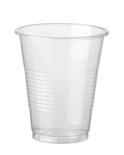
Use either disposable measuring cups or even a standard plastic cup, as measurements don’t have to be exact. A plastic spoon will work in place of a tablespoon.
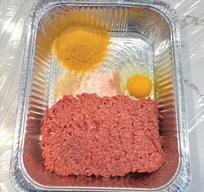
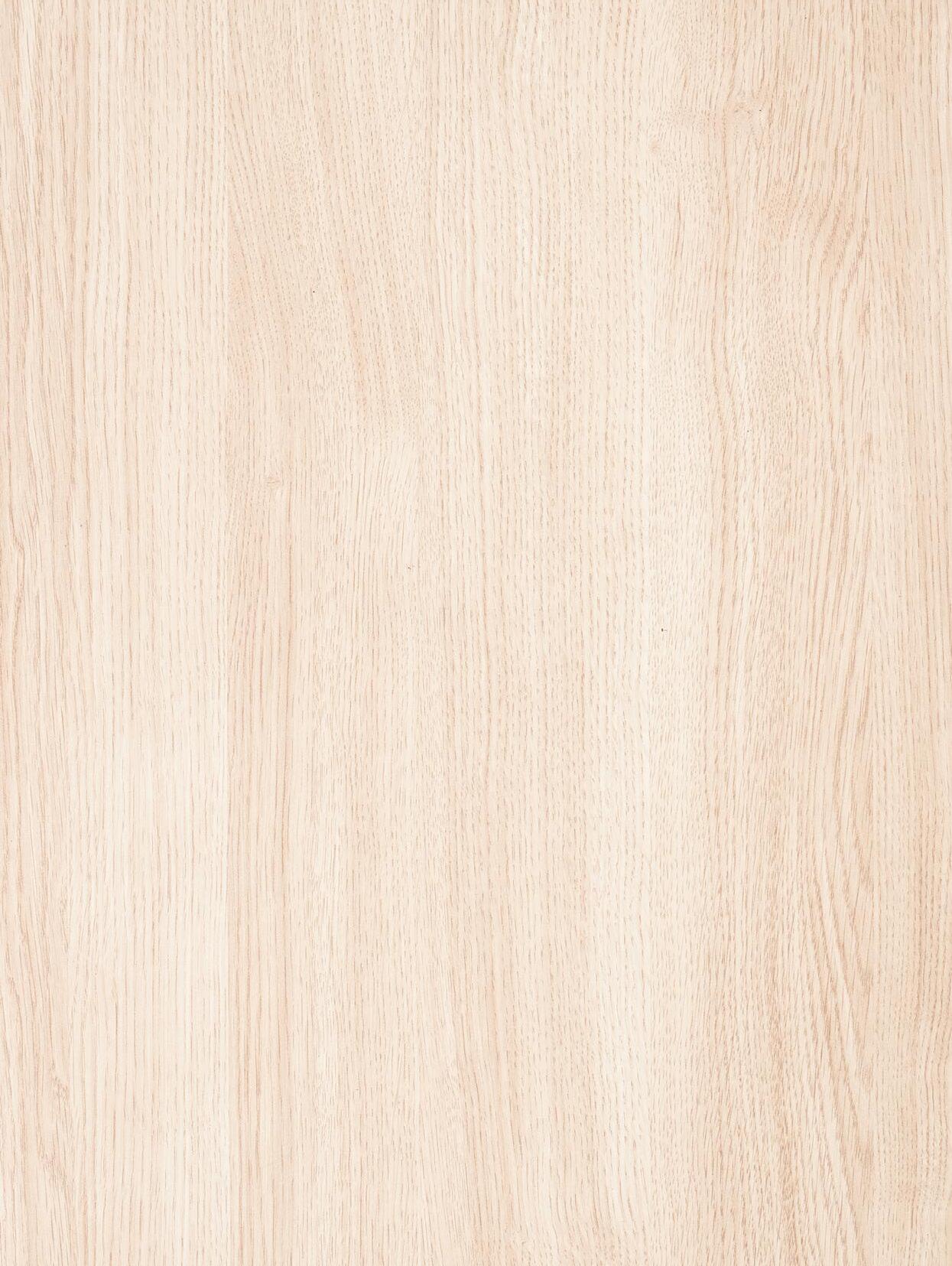
Note: All ingredients must be kosher for Passover.

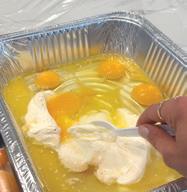
In an aluminum 9X13 tin, combine the sour cream, sugar, orange juice, eggs, oil, vanilla,and salt.
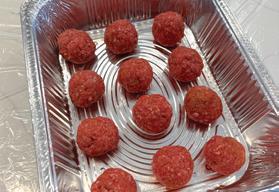

Add in 2 boxes frozen blintzes; I like to alternate a fruit blintz and cheese blintz. Push the blintzes down into the mixture and use a spoon to put some over the top.

Sprinkle sugar and cinnamon over the top. Cover tightly and label, “Needs to be baked” before freezing, as a reminder to bake this dish once your oven is kosher for Pesach! I At that point, thaw the blintz souffle, bring it to room temperature, and bake it at 350° for 45 minutes until puffed and golden.
1 pound kosher for Pesach chopped meat 1 cup kosher for Pesach breadcrumbs
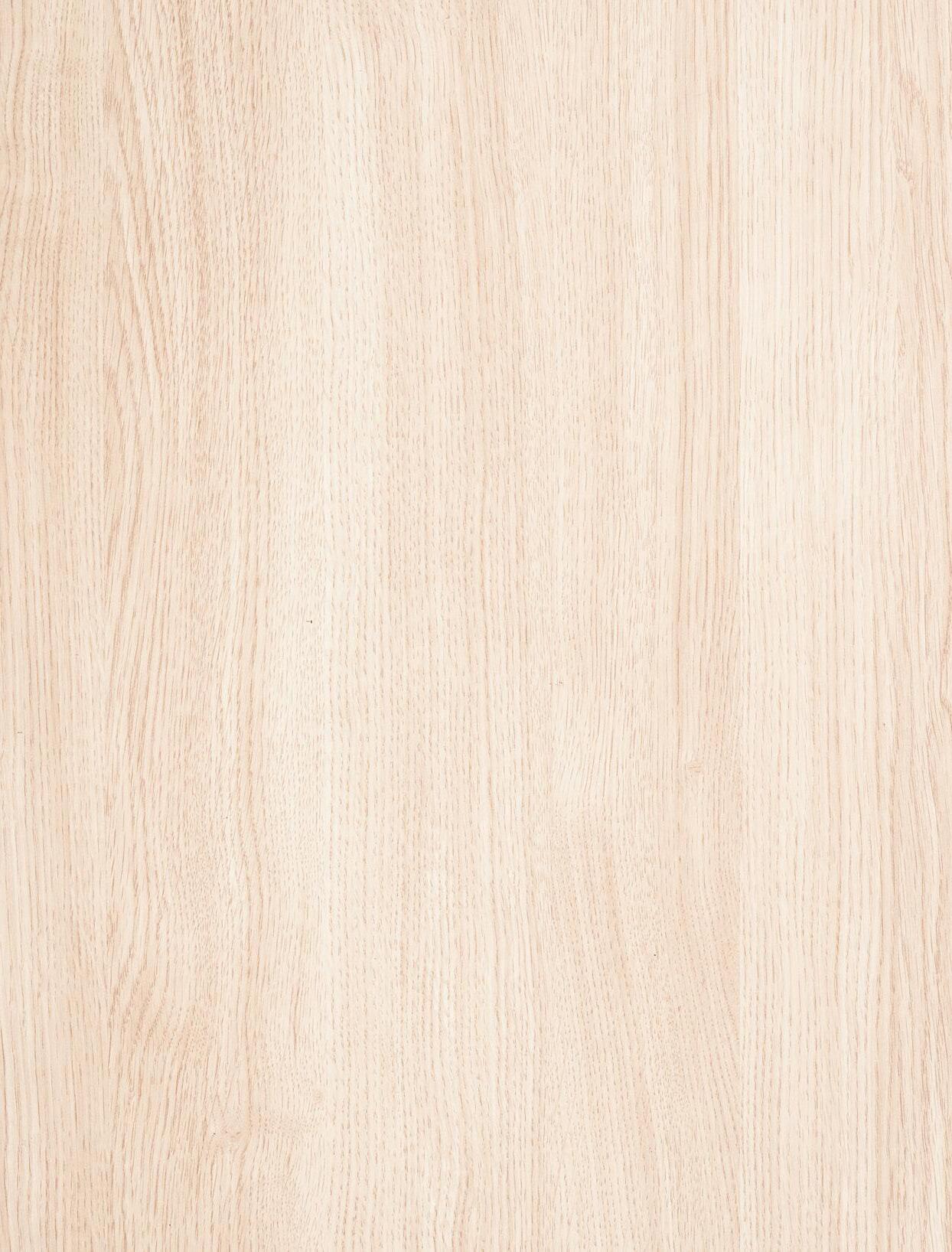
In a disposable aluminum 9 x13 pan, on a completely covered surface, prepare the meat mixture. 1
1 onion, finely diced

Roll the meat mixture into balls and place them on a second disposable aluminum baking sheet. Put the meatballs into the freezer on the baking sheet. Once frozen, transfer them to a Ziploc bag. Once the stove is kashered, the meatballs can be cooked frozen directly in the sauce. I will even prepare the meatballs in the sauce and if not needed until the end of the chag, the meatballs can be frozen in the sauce and will still taste great once defrosted.
1 egg
Salt and garlic powder
2 jars marinara sauce 1 can cranberry sauce
Pour the marinara sauce into a pot and melt the cranberry sauce in it. Place frozen meatballs into the sauce and bring to a boil. Once boiling, lower heat to a simmer, cover the pot, and cook for an hour.
Making Pesach more manageable takes a little extra thought and organization but can help make Pesach a lot less overwhelming. Thinking outside the box and getting creative can ensure a holiday preparation that is doable and even enjoyable. Chag sameach!

By Rabbi Eli Gersten
One of the most daunting preparations we make for Pesach is kashering, a process to prepare chametz utensils for Pesach use. As with all areas of halachah, those who are unsure of how to apply the rules of kashering to their situation should consult an Orthodox rabbi.
The Torah (Bamidbar 31:23) requires kashering utensils acquired from a non-Jew, as they are presumed to have been used in non-kosher cooking (and will have absorbed non-kosher flavor). Since chametz on Pesach is also forbidden, the Talmud applies the laws of kashering to chametz as well. There are four basic methods of kashering. The prescribed method depends on the utensil and how it was used.

Kashering Involves High Heat!
Utensils used directly in the fire (e.g. BBQ grate), must be kashered by placing them into fire. This process has the effect of burning away any absorbed taste. To qualify as a complete libun, metal must be heated until it glows. A self-clean cycle of an oven (approx. 850°F) also qualifies as libun. There is no need to wait 24 hours before libun, though it is advised. There is no need to scrub the utensil before performing libun, since the fire will burn off residue, but some cleaning is advised.
Utensils that were used to cook nonkosher liquid can be kashered with hagalah (boiling in water). To prepare the utensil for hagalah, the utensil must be thoroughly cleaned. Only utensils that can be scrubbed clean should be kashered. Items that have
narrow cracks, crevices, deep scratches or other areas that cannot be cleaned, cannot be kashered for Pesach. The following, for example, cannot be kashered for Pesach: pots with rolled lips, bottles with narrow necks, filters, colanders, knives (or other utensils) where food can get trapped between the blade and handle. After cleaning, the utensils should then be left idle for 24 hours. To kasher, every part of the utensil must make contact with boiling water. This process can be done in parts. For example, a large spoon can be immersed into a pot of boiling water for 10 seconds, turned over and then the remainder immersed. When the utensil is removed from the boiling water, it should be rinsed off in cold water. While strictly speaking these utensils may be kashered in a clean non-Pesach pot that was not used for 24 hours, the minhag, however, is to kasher the pot first, by boiling water in the pot and discarding.
If the utensil only came in contact with hot liquid being poured on it (iruy), it can be kashered in the same manner. If the utensil came in contact with hot chametz solids, then one should kasher by pouring boiling water accompanied by an even melubenet, a heated stone. For example, if hot pasta fell into a sink, stones should be heated on the stove, and moved around the surface of the sink while boiling water is poured over them. In this way, the water will remain boiling on the surface of the sink. The stones may need to be reheated several times, since they cool down quickly. In all other aspects the process is identical to hagalah.
In certain cases, libun kal is sufficient. This can be accomplished by heating in an oven at 550° F for one hour. This method of kashering can be used in place of hagalah. It is also used when the need for libun is only an added stringency.
Ceramic, such as china, and enamel coated pots cannot be kashered. It is the custom of Ashkenazim not to kasher glass as well. Some poskim do not permit kashering plastic or other synthetic materials for Pesach; however, the opinion of the OU rabbanim is that it may be kashered, if there is a need. Ask your rabbi for guidance. Composite stone (e.g. quartz counters) which is made mostly of stone, but is held together with resin, can be kashered. As a rule, materials such as metal, wood, stone, natural rubber, and fabric can be kashered.
It is recommended that one not wait until erev yom tov to run the self-cleaning cycle to kasher an oven, as this is known to be hard on the oven and repairs may be required.
Some newer self-cleaning ovens employ Aqualift technology that cleans at low heat; they should be considered like nonself-cleaning ovens.
Please note that kashering may discolor oven racks and stovetop burners. If racks have rubber wheels, the wheels may melt. Replacement racks for Pesach should be ordered well in advance of the holiday.
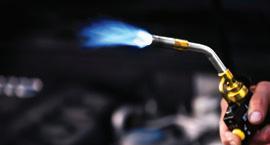
Surface must be heated to a dry temperature of approximately 850°F (i.e. self-cleaning oven) or until it begins to glow.
Surface should be completely cleaned with hot water and unused for 24 hours.

Surface should be completely clean and dry.
The utensil should be completely submerged in a pot of boiling water.
Cold water should be poured over surface.

Surface should be completely cleaned with hot water and unused for 24 hours.
Surface should be completely clean and dry.
Boiling water should be poured directly over all surfaces followed by cold water poured over the entire surface.

Surface should be completely cleaned with hot water and unused for 24 hours.
Surface should be completely clean and dry.
Surface should be heated to a dry temperature of 550° F (i.e. oven) for a minimum of one hour.
GLOSSARY
LIBUN GAMUR - Burning
HAGALAH - Boiling
IRUY KLI RISHON - Poured Boiling Water
EVEN MELUBENET - Heated Stone

7
SELF-CLEANING OVENS
LIBUN (burning) Remove any visible food. Complete self-cleaning cycle with racks in place.
NON-SELF-CLEANING OVEN
LIBUN (burning) Clean all surfaces (walls, floor, doors and racks) thoroughly with a caustic cleanser (e.g. Easy Off). Pay special attention to thermostat, oven window, and edges of the oven chamber. Black discoloration that is flush with the metal need not be removed. Oven should not be used for 24 hours. Place racks in the oven and turn the oven to broil (highest heat) for 60 minutes. A broiler pan that comes in direct contact with food should not be used.
Note: The method of kashering described above is based on the ruling of Rav Aharon Kotler zt”l. However, Rav Moshe Feinstein zt”l ruled that the oven must either be kashered with a blow torch, or an insert should be placed in the oven. Consult your rabbi for guidance
1
REFRIGERATORS, FREEZERS, FOOD SHELVES & PANTRIES
CLEAN & COVER
These areas should be thoroughly cleaned, paying special attention to the edges where crumbs may get trapped. The surfaces should be lined with paper or plastic.
Note: Refrigerators and freezers will operate more efficiently if holes are poked in the lining to allow air flow.
2
DISHWASHERS
HAGALAH (boiling in water) Kashering of dishwashers is a complicated process and should only be done in consultation with a halachic authority.
8
WARMING DRAWERS LIBUN (burning) Typically warming drawers do not get to libun kal temperature. Therefore, unless one is experienced in kashering with a torch, warming drawers are not recommended for use on Pesach.
9
MICROWAVES
HAGALAH (boiling in water) (for those who kasher plastic) The microwave must be cleaned well and not used for 24 hours. Glass turntable should be removed and replaced with new kosher-for- Passover surface. A styrofoam cup should be filled with water and boiled in the microwave for 10 minutes. The cup should be refilled and moved to another spot and the process repeated for 10 more minutes. Cardboard or contact paper should be taped over the glass window pane for the duration of Pesach.
10
METAL TEA KETTLE HAGALAH (boiling in water)
The same treatment for pots applies here. Although it is uncommon for anything but water to be put into a tea kettle, nevertheless it must be kashered. Tea kettles often sit on the stove, and it is common for them to get spritzed with hot food.
11
ELECTRIC MIXER NOT RECOMMENDED
Because of the difficulty in cleaning out the housing of the mixer from fine particles of flour, one should not use their year-round mixer on Pesach. The mixer blades, though, can be cleaned and kashered with hagalah
STAINLESS STEEL SINK
IRUY (pouring boiling water)
Remove drain. [It is recommended that the drain be replaced. If this is difficult, it may be used if the drain has large holes that can be completely scrubbed clean]. It is preferable to kasher a sink by pouring boiling water in conjunction with an even melubenet (a heated stone). In lieu of kashering with a heated stone, some will place a rack on the bottom of the sink, or use a sink insert.
CERAMIC SINK
CANNOT BE KASHERED AND MUST BE COVERED
The sink should not be used with hot water for 24 hours. The sink should be completely clean and dry. The sink should be covered with layers of contact paper or foil; it is best to purchase a sink insert.

12
SILVERWARE, POTS & OTHER SMALL ITEMS
HAGALAH (boiling in water)
Rolled lips, seams or cracks that cannot be cleaned will require torching of those areas. Utensils should be immersed one at a time into a pot of boiling water that is on the fire. Water should be allowed to return to a boil before the next item is placed in the pot. The pot can be non-Passover, provided it is clean, has not been used for 24 hours, and water is first boiled in the pot and discarded. Larger items can be submerged in the water one part at a time. Utensils should then be rinsed in cold water.
13
KEURIG COFFEE MAKER
HAGALAH OR IRUY (pouring boiling water) (for those who kasher plastic) The coffee maker must be cleaned well and not used for 24 hours. Remove K-cup holder and perform hagalah or iruy on K-cup holder. Run a Kosher-for-Passover K-cup in the machine (this will kasher the top pin).
4
THE SINK FAUCET (including instant hot)
IRUY (pouring boiling water)
Detach any filters or nozzles.
5
STAINLESS STEEL, GRANITE, COMPOSITE STONE (E.G. QUARTZ) OR FORMICA
COUNTERTOPS
IRUY (pouring boiling water) OR COVERING
It is preferable to kasher a countertop by pouring boiling water in conjunction with an even melubenet There are different opinions as to whether formica (or plastic) countertops can be kashered for Pesach.
CERAMIC TILE COUNTERTOPS
CANNOT BE KASHERED & MUST BE COVERED
The counter should be covered with a waterresistant covering.
6
GAS STOVETOP
LIBUN (burning) & COVER The stovetop surface and grates should be cleaned well and not used for 24 hours.
The stovetop surface should be covered with foil. The stovetop grates can be replaced or they should be burned out in the oven at 550° F for one hour.
ELECTRIC STOVETOP
LIBUN (burning) & COVER The stovetop surface should be cleaned well and covered with foil. The burners should be turned on until they glow red.
GLASS STOVETOP
CANNOT BE KASHERED & MUST BE COVERED*
The stovetop surface should be cleaned well and not used for 24 hours.
During Pesach, pots should not be placed directly on the stove surface, but rather an aluminum (or other metal) disk should be placed directly under the pot.
*The entire glass top surface should not be covered as this might cause it to overheat and crack.
14
HOT WATER URN, WATER COOLER
IRUY (pouring boiling water)
Urn only used for heating water: Run hot water through the water tap for 10 seconds, while pouring boiling water from a kettle over the water tap. Urn also used to warm food (e.g. to warm challah): Not recommended. Must be put away for the holiday.
Water Cooler In addition to pouring boiling water over tap, replace water bottle.
15
BABY HIGH CHAIR
COVERED
The tray should be covered with contact paper. The seat, legs and bars should be wiped down with a soapy rag.

16
TABLECLOTHS, KITCHEN GLOVES, APRONS & OTHER FABRIC ITEMS
WASH Fabric items can be kashered by washing them with detergent in a washing machine set on “hot.” Items should be checked to make sure no pieces of food remain attached.
17
TABLES
COVERED Although wooden tables can be kashered, the common custom is to clean tables well and then cover them.
Cooking for Pesach is no simple task, particularly when we don’t have many of our pantry staples available for use. To give you a hand, we’ve provided an ingredient substitution guide. Happy cooking and baking!
1 tbls. chili powder (SEE RECIPE ABOVE)
SAUT E GARLIC IN OIL. ADD REMAINING INGREDIENTS. SIMMER UNTIL DESIRED CONSISTENCY IS REACHED.
COMBINE FIRST 6 INGREDIENTS IN SAUCEPAN TO BOIL. SIMMER FOR 15 MINUTES. *CAN USE PARVE BEEF OR CHICKEN STOCK FLAVOR CUBE IN WATER 2 tbls. paprika 1 tsp. cayenne pepper













It’s a half-hour to Chatzos. The korban Pesach has been eaten, and Menashe’s wife and daughters are clearing up from the Seder. Menashe scans the room, taking a count of his family members. From midnight and on, everyone must remain indoors to be protected from the Malach Hamaves. Their home, marked with the blood of the korban Pesach on its doorpost, will be a safe place when Makkas Bechoros happens.
Menashe starts with the youngest sextuplets, aged 18 months. They are all sleeping in their cribs. The four other sets of sextuplets are scattered around the house, and it takes time to make sure each child is accounted for.
It’s 10 minutes to Chatzos, and there is still one child that Menashe has not found.
“Has anyone seen seen Ovadia?!” Menashe cries out urgently. The entire family searches frantically as the time ticks closer to Chatzos.

By Rabbi Ezra Friedman
Imports of kosher food to the Israeli market have increased greatly over the past twenty years. Studies show that over fifty percent of food sold in Israeli supermarkets is imported, and that number continues to climb each year.
The Chief Rabbinate of Israel certifies thousands of facilities around Israel and uses substantial manpower in order to provide this service. The Rabbinate never intended to certify products and facilities outside of Israel, as its purpose is to certify kosher food for the local Israeli market.
The term “B’ishur HaRabbanut Harashit” (authorized by the Chief Rabbinate of Israel) appears on every kosher imported product that passes through the Rabbinate system. As opposed to the certification of local products, the Rabbinate has neither the manpower nor the finances to check and certify factories worldwide. This being the case, a number of years ago (when the import market was much smaller than it is now), the Rabbinate decided it would permit kosher products with foreign certifications to be imported, as long as the standards of the imported products more or less coincided with the standards of the Chief Rabbinate. The Rabbinate has no system to confirm the standards of foreign hechsherim and relies on written testimony only.
Unfortunately, there are many irregularities in the realm of kashrut supervision, particularly when huge numbers of products are being manufactured abroad and then imported to Israel. Some kashrut agencies are making
use of extreme leniencies, based on minority opinions that have been rejected by virtually all poskim over the generations. We are not referring merely to issues of, for example, Chalav Stam or Chadash. There have been documented cases of lenient kashrut organizations granting certification by phone/fax, without kashering any equipment or even showing up in person to supervise. In addition, there were cases in which ingredients were not checked properly and no regular visits took place. In other cases, specific products were labeled “Chalav Yisrael” or “Kosher for Pesach” when in fact the halachic standards of these categories were not met in the factories. One should note, however, that even if bediavad (ex post facto) these products might not “treif” one’s dishes, one should choose to avoid relying on weak, flimsy leniencies.
Unreliable hechsherim are particularly widespread in the house brands of Israeli supermarkets as well as with large Israeli food companies marketing imported items under their own labels. Unfortunately consumers mistakenly assume that B’ishur HaRabbanut Harashit on the label signifies that the Rabbanut has properly checked the product and approves its supervision.
Pesach can add additional stress in terms of imported foods. Badatzim in Israel have distanced from mass produced pesach products for decades. There was a time when mehadrin certifications in Israel would only approve products for pesach that had five ingredients or less. This phenomenon has affected Pesach certification

in Israel in a sometimes negative fashion. Meaning, Israel has a large population that consumes Kitniyot and Shruya (Gebrocht). In addition, there are numerous products that can be produced kosher for Pesach with all halachic requirments yet certain certifications stay away from the concern of looking more “lenient”. OU kosher has a symbol for those who consume kitniyot and feels responsibility to certify products that can be consumed on Pesach. Pesach products in Israel might have certifications that are not recommend and one should be very careful especially on Pesach. However, at the same time many of these products might be OU or actually be completely acceptable for Pesach. Feel free to reach out to the OU Israel Gustave and Carol Jacobs Center for Kashrut Education Hotline for guidance on these issues
The OU Israeli office has made great strides in the last few years regarding imported products. We have built a strong connection with the import division of the Chief Rabbinate, and importers have taken interest in OU products.
For the consumer’s part, when choosing imported products, one should always confirm that there is a reliable certification (a hechsher that you would trust if you were living overseas). This policy is familiar to kosher consumers living abroad, but less so in Israel. Upon seeing an unfamiliar hechsher, one should ask a rabbi who is knowledgeable in modern kashrut (and preferably involved with kashrut certification overseas). If stores and importers were to realize that reliable and
genuine kashrut is a priority for so many consumers, they would be more inclined to change their policies. We must strive as kosher consumers to demand products with reliable certification, both in Israel and around the world, and to reject products of questionable status. When we do this, we gain merit not only for our own good deeds, but in addition, we are doing a true chesed (helpful deed) for the kosher consumer in Israel. By improving the kashrut standards of imported foods, we help those in Israeli society who truly want to keep kosher.


By Rabbi Ezra Friedman
Eretz Yisrael, our homeland, is a place where a Jew can experience tremendous spiritual growth. Many of us send our children to learn here. We spend Yomim Tovim in Israel, quite often we vacation, and many have merited to settle here in the holy land. And, as in all aspects of life, with great potential comes great challenges. This is especially true regarding the topic of kosher food in Israel. There is no question that there is an abundance of kosher food in Israel, something we could only dream of in the Diaspora. Items we had to steer clear of overseas are suddenly kosher with strict supervision here in Israel. Yet at the same time, the challenges of the Israeli kosher market are in some respects more difficult than we are used to overseas. There is such a wide array of certifications, there are additional concerns due to the mitzvot hateluyot ba’aretz, and unfortunately, politics can also complicate matters and obscure the actual issues of kashrut. All these factors combined can make us feel we are groping in the dark when trying to choose products we can rely on.
Let’s try to shed some light on the issues and establish a degree of clarity here. Although it would be impossible to explain all aspects of the Israeli kosher food system in a single, brief article, we will try to outline the imperative factors, the most common misconceptions, and the general underpinnings of the system, in order to provide the reader with a more enlightened ability to decide which certifications they will choose to rely on.
Whenever a product is being sold or marketed, a company or service must ask itself, who is the target consumer? This fundamental question is especially important for the kosher food market in Israel. For the past 75 years, Jews overseas have faced many challenges in keeping kosher. Communities were built around making sure there was a kosher butcher, bakery and food services. Even today, with so many kosher products and establishments available, keeping kosher can still be a challenge at times. Any Jew who keeps kosher in the diaspora is making a conscience choice to do so. They are choosing to shop only from a limited selection of products and to spend more to purchase certified food in a country where
non-kosher food is much more common and usually more affordable as well. Since such a lifestyle demands very obvious sacrifices, the profile of the consumer who consistently keeps kosher is either Orthodox or extremely traditional.
In Israel, the reality is quite different. On the one hand the kosher opportunities in Israel are almost endless: hotels with full kosher certification, malls with entire kosher food sections, and of course supermarkets where every single product must be kosher, period. Yet this reality, for all its seeming ease and abundance, comes with a serious challenge. Studies have shown that over 75 percent of Israelis are interested in keeping kosher at some level or another; this, however, is in no way an indication of their religious observance. On the contrary, out of this large percentage, a majority do not consider themselves religious, but rather see keeping kosher as a cultural tradition they wish to hold onto. In fact, since they don’t identify as “religious,” many of the Israel’s kosher consumers will eat non-kosher when traveling outside Israel.
This situation, with the market for kosher food in Israel consisting largely of not-fully-observant Jews, greatly affects the way certifications are given. Since the average kosher consumer is interested in having access to as many products as possible, standards are much more fluid. Often, the non-religious kosher consumer has little or no knowledge of the different certifications, and in fact, as long as someone claims that their product or establishment is kosher, even with no certification whatsoever, a majority of kosher consumers in Israel will eat regardless of standards, supervision or reliability. For example, many European brand-named snacks and chocolates are not certified and are not consumed by the religious community in Europe, yet it is quite common to find these snacks certified in Israel as kosher with a symbol on a sticker and no apparent certification on the original label. Because the Israeli public wants to eat this product, and since supermarkets that would like kosher certification are required by the Chief Rabbinate to have all products certified, Israeli importers will go to great lengths to get the product certified. In most cases the importer pays for some type of certification, while the facility changes nothing in their production or ingredients. This demand from the Israeli kosher consumer makes it hard for higher-standard certifications to meet their needs. The consumer wants a worldwide
selection of all types of food, yet at the same time insists on some type of kosher certification, which naturally leads to a lowering of standards, sometimes to a drastic extent.
Of course, the religious kosher consumer takes a much different approach. Many certifications in Israel adhere to some of the highest standards. These certifications are often under the auspices of a “Badatz”— an abbreviation for beit din tzedek, a board of supervising rabbis.
Yet, certain political or social concerns pose too many constraints for the regular kosher consumer or manufacturer. Certain certifications have political associations which would require them to use only their own or very specific kosher ingredients, even in cases where the basic products require little or minimal kosher supervision. In addition they might require extra mashgichim or pose other demands that might be considered beyond normal kosher standards. On a market level, since different Badatzim serve different communities, there is pressure for manufacturers to hold multiple certifications, since some distributors require a certain certification for the population they serve, while others need a different symbol for their clientele.
Local Production and Imported Products
Israel’s food market has shifted drastically over the last thirty years. Although local production still prevails in areas such as shechitah, dairy products, fresh produce and wines, most finished food products are now imported. There are various reasons behind this new phenomenon, and it, in turn, gives rise to various issues. One might assume that since the country has a majority of Jews and an independent central Jewish authority (the Chief Rabbinate), the challenges of kosher supervision should be easier, but the contrary is true. A large percentage of raw ingredients are imported, and just as many finished products are made overseas. This includes condiments, cereals, candies and frozen products. (See Rabbi Friedman’s article, “Imported Kosher Food,” for more information about the certification of food imports.)
The kosher system in Israel consists of two main tracks: the Chief Rabbinate (Harabbanut Harashit), which is a state-owned enterprise, and the private certifications, which are formal business enterprises. (Due to numerous factors, the law does not allow kashrut organizations to be non-profit.) The Chief Rabbinate was built out of the vision of Rav Avraham Yitzchak Hakohen Kook zt”l to initiate a unified system which he hoped would bring about the reinstitution of the Sanhedrin. Regarding kashrut, the system of the Rabbanut is quite complex. It is headed by two Chief Rabbis, Sephardi and Ashkenazi, and has an elected body called the Chief Rabbinical Council, consisting of twelve rabbis. This council, along with the Chief Rabbis, sets kosher standards for the entire country. From time to time, new issues must be addressed, such as new findings of bug infestation in vegetables or cultured meat. The council also sets standards regarding products and supervision.
The Chief Rabbinate has an extensive staff whose job is to apply the standards set by the Council. And therein lies a formidable challenge. In essence, kosher supervision is in the hands of local rabbis and their staffs. Every city or municipal council has its own independent rabbinical body in conjunction with the municipality and the Ministry of Religious Affairs, and sometimes there are gaps between the standards the Chief Rabbinate would like to apply, and those the local rabbis are willing to impose. There are cases where municipal rabbis would like to be more stringent than the Chief Rabbinate, and vice versa. Since the municipal rabbis have the sole license to give kosher certification to all establishments under their jurisdiction (restaurants, wedding halls, caterers) there can be large discrepancies between one city and another.
Another important factor is the setup of each local rabbanut. In far too many cases financial and political issues can affect the level of certification. For example, there are cities where the municipality is very generous to the local rabbanut and supports initiatives for better certification, such as more supervisors. In other municipalities the budget is so low there can be one parttime supervisor on 170 establishments, with a minimal number of mashgichim. In such a case, maintaining an acceptable standard is very difficult. Then, there are many situations where government funding is held up. There have been instances in regional councils where the local chief rabbi or the kosher supervisor has retired, and instead of replacing this official, the council asks a rabbi or supervisor from an adjacent municipality (who is already flooded with work) to take over. There are cases where one rabbi is in charge of two or even three regions at once, with no way of adding more personnel. No one
is in favor of this situation. Obviously, in order to run a professional kashrut system, adequate staff and budget are critical. Rabbi Menachem Genack, CEO of OU Kosher, is constantly advocating for additional funding for personnel to run the rabbinate system properly. The lack of unified standards challenges the kosher consumer. There can be a Rabbinate certification that runs smoothly, while others can barely function. This is one of the reasons why there is such a lack of clarity regarding rabbanut certifications.
One of the most common questions related to kashrut in Israel is “Do you keep mehadrin?” This term has almost nothing to do with the actual laws of kosher supervision. The term mehadrin is rarely found in the Shulchan Aruch and its commentaries in regard to the laws of kosher food. The term is applicable to many other halachic areas, such as arba’ah minim (the lulav and its accompanying species). Another example is with regard to Chanukah candles. Our Sages discuss the basic requirement to fulfill the mitzvah of ner Chanukah and call higher levels of fulfillment “mehadrin” and “mehadrin min hamehadrin.”
Regarding kashrut, the term mehadrin, as used today, denotes a level of kashrut where, due to issues of dispute between different authorities, the higher standard is upheld. The term came into use in Israel over 40 years ago, when there was a need for a unified, basic level of kashrut without subjecting the less religious public to constraints. Kasher Lemehadrin is supposed to represent a level of kashrut which is undisputable. This, however, is impossible since every certification has its own stringencies and systems. In the “mehadrin” arena there is no way for consumers to discern if the hechsher is truly up to everyone’s standards, as each individual rabbinate can decide what is and isn’t considered mehadrin.
Another issue for the consumer who truly wants to keep kosher in Israel is that once there are two levels, then an organization or establishment that does not keep mehadrin standards can be completely subpar, since, as explained above, a majority of kosher consumers would be satisfied with a rubber stamp.
There are, however, certain standards that have become universal in Israel, which differentiate mehadrin from non-mehadrin. All dairy products labeled mehadrin are Chalav Yisrael (an observant Jew witnessed the milking, as opposed to the American Chalav Stam ruling), all baked goods are Afiat Yisrael (a Jew lights the oven), and all products containing any of the five grains are Yashan. Restaurants will have only Jews cooking to abide
by the opinion of the Beit Yosef that a Jew has to take an active part in the cooking process in order to prevent transgressing the prohibition of Bishul Akum. Israel has a large industry of non-glatt meat, something not available overseas today, and mehadrin establishments will only use glatt products. It should be noted that not all mehadrin standards are equal even for these specific issues. For example, certain standards of Chalav Yisrael in Israel do not meet the OU’s requirements, and therefore we do not accept every product labeled Chalav Yisrael.
Our Sages in Masechet Ketubot teach that the Holy Land is “acquired through tribulations.” To truly flourish in Eretz Yisrael and gain all the spiritual wealth that our Land offers, one must be sufficiently committed and willing to suffer some difficulty and inconvenience. The kosher system in Israel presents an amazing opportunity to acquire a spiritual footing in the Holy Land. Fifty years ago, anyone living here who wanted to keep to an uncompromising standard of kashrut had access only to a very limited range of products, and had to forgo certain foods altogether for lack of an acceptable hechsher Today, one can enjoy gourmet cuisine while adhering to a high standard of kashrut. But to do so, one must be an educated consumer.
There is no question that any authentic kosher certifier has to have two things in mind: to provide a transparent, professional certification without being politically biased, and to provide a large-scale certification which will benefit the broader Israeli public. OU Kosher in Israel is constantly busy with these issues. We are seriously involved in the world of imported foods for the broader public, thanks to our strong ties with the Chief Rabbinate, and this relationship is only growing stronger. OU kosher in Israel feels for numerous reasons that the mehadrin style system here is to be preferred. All facilities, caterers, and restaurants we certify in Israel adhere to Bishul Yisrael (according to the opinion of the Beit Yosef), Chalav Yisrael, Afiat Yisrael and Yashan. To make this more convenient for the consumer in Israel (both Israeli and Anglo) we have a mehadrin symbol which will help clarify the distinctions. Rest assured, however, that anything with the regular OU symbol coming from overseas is certainly kosher, as are any of our products sold around the world.
Let us bask and thrive in the holiness of Israel, while realizing we must keep our eyes open as we make our way through the complex maze of kashrut. The Gustave and Carol Jacobs Center for Kashrut Education was created to serve as a compass for anyone wants to learn more about the world of kashrut in Israel. We are here at your service for all your kosher education needs.
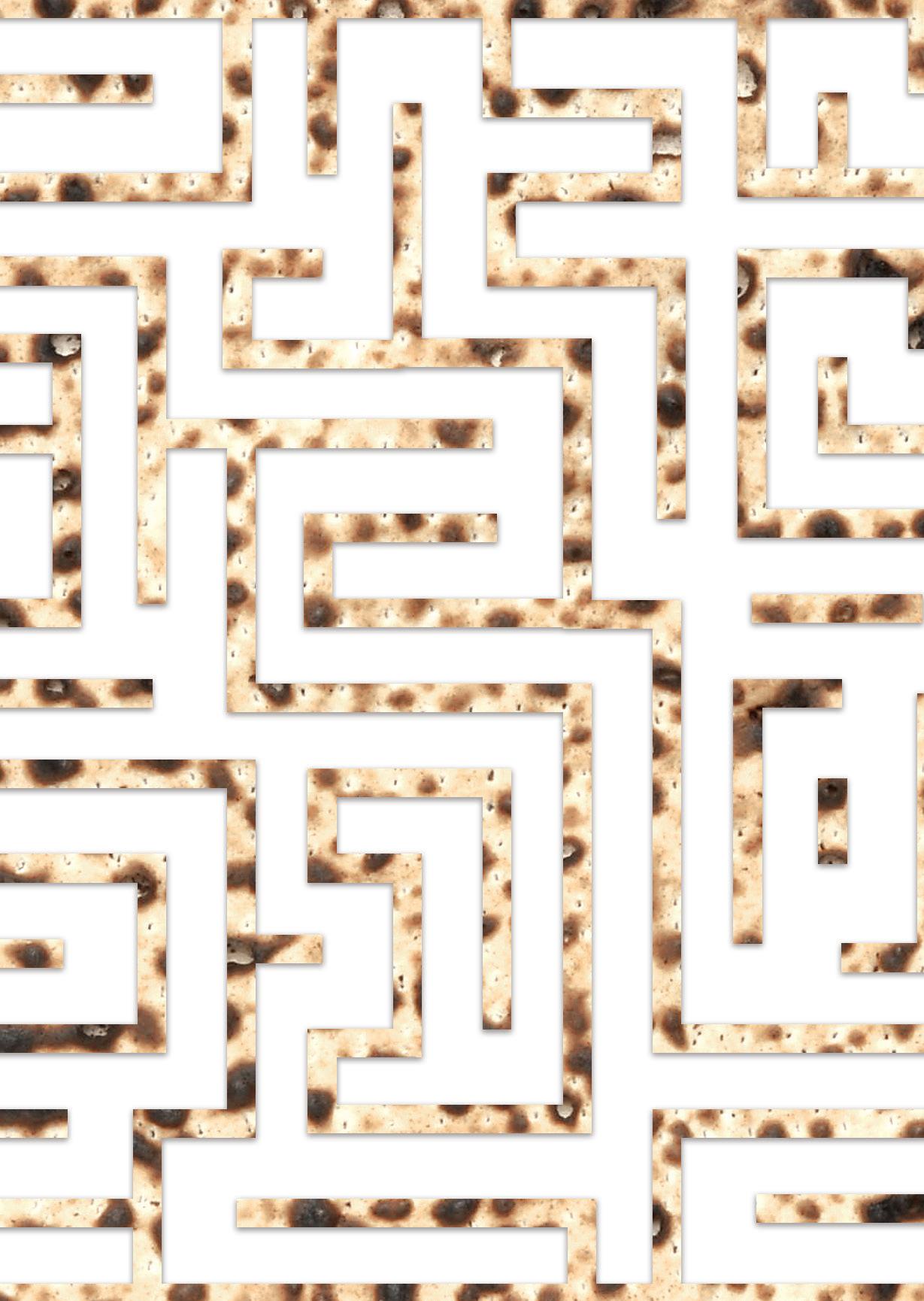
By Rabbi Yissachar Dov Krakowski
One of the least understood areas in Pesach foods is the distinction between the different types of matzot. Do I eat only shemurah, shemurah eighteen minutes, regular eighteen minutes, hand, reichaim shel yad (ground by hand), or simply regular kosher l’Pesach matzot? Is there really a difference? After all, if the hechsher says it’s kosher l’Pesach, isn’t it kosher l’Pesach?
The answers to the two latter questions are both yes. Yes, all the aforementioned matzot are kosher l’Pesach, and yes, there are important differences between the various types of matzot. Here is a brief outline of these distinctions.
The Torah tells us that we may not eat, or even have in our possession, any chametz (leavened grain) during Pesach and commands us to eat matzah (unleavened bread) during the holiday. Our Sages define unleavened bread as dough that is fully baked within eighteen minutes from the moment the flour comes into contact with water. Therefore, all matzot that are kosher for Passover must meet this criterion. Any mixture of grain and water left for longer than eighteen minutes is considered as subject to fermentation and is defined as chametz. While chametz is forbidden throughout the seven days of Pesach (in the Diaspora, eight days), there is a positive mitzvah to eat matzah on the first night of Pesach, a mitzvah we fulfill at the Seder. Regarding these obligatory matzot, the Torah explicitly commands us to “guard the matzot.” One might assume that the purpose of this “guarding” is to be certain that the matzot don’t become chametz (that is, by not allowing more than 18 minutes to pass from the time the flour and
water come into contact until the dough is fully baked). But we already have a mitzvah prohibiting chametz. By telling us to do something obvious, the Torah appears to be using redundant wording. Since not a word in the Torah is unnecessary, our Sages interpret this instruction to mean that for the matzot we use for the mitzvah of eating matzah at the Seder, there must be an extra guarding—hence the idea of shemurah matzot. The clear implication is that for matzot to be considered shemurah there has
Since not a word in the Torah is unnecessary, our Sages interpret this instruction to mean that for the matzot we use for the mitzvah of eating matzah at the Seder, there must be an extra guarding—hence the idea of shemurah matzot.
ketzirah), and this is the standard for shemurah matzah certified as such by the OU.
It follows that non-shemurah matzot can be 100 percent kosher. If only shemurah matzot were kosher, then by definition, the extra care taken in producing them wouldn’t be extra at all, but part of the basic requirements, and hence they would be considered regular kosher l’Pesach matzot.
Since the whole idea of having shemurah matzot comes from the injunction of having an extra shemirah for the obligatory matzot eaten on the first night of Pesach, one only need use shemurah matzah for the Seder. There are, with regard to Pesach in particular, many different minhagim that involve extra stringencies. Using only shemurah matzot for the whole of Pesach is one of those. Thus if it is someone’s minhag to use only shemurah matzah throughout all the days of Pesach, they should continue doing so. If, however, one doesn’t have such a minhag they need not take it upon themselves.
to be something “extra” involved in the process, above and beyond our vigilance to prevent the dough from fermenting. What this extra shemirah is, is variously interpreted. It either means that we guard the flour from the moment it was ground until it is kneaded into dough and baked, or alternatively, that we guard the wheat kernels from harvest until they are made into matzot. The latter is what is generally referred to as shemurah matzah (misha’at
There is, however, one additional reason why someone might want to keep the stringency of eating only shemurah matzah: The Gra explains that while eating matzah is obligatory only on Seder night, we fulfill a mitzvah (mitzvah kiyumit) every time we eat matzah throughout the seven days of Pesach, as it says in the pasuk, “Seven days you shall eat matzot.” It may therefore be that all the matzot we eat for the whole of Pesach (in the form of matzah, not as matzah meal) have the status of the matzot mitzvah and therefore should also require an extra shemirah of a sort. If one is eating shemurah for this reason, there is then no reason to use only shemurah matzah when one is using matzah byproducts such as cakes and other foods made with matzah meal.

Another stringency which many observe is to use what is known as eighteen-minute matzot (often labeled as chai rega’im). This term applies to machine-made matzah for which the machinery is stopped, partially taken apart and cleaned every eighteen minutes instead of after an eight-hour shift (or some other time variant).
Why is this considered a chumrah rather than a basic requirement? The reason the eighteen-minute requirement is not deemed necessary for regular machine matzot is because we say that since the machine is always moving, all the dough is always getting mixed in (even if it gets stuck on the sides of the equipment briefly). Therefore, there is no risk of any chametz coming into existence. Two additional factors further reduce any possible concern. First, the tiny deposits of dough that get stuck in little nooks and crannies at the sides of the machinery and get remixed into the matzot constitute only a minute amount and are therefore
batel (nullified—viewed as if they didn’t exist at all). Secondly, the machines are in any case cleaned every few minutes either with air guns or vacuum cleaners. While that cleaning process is not perfect (the equipment remains in operation, with a steady flow of matzah production) it nevertheless provides yet another safeguard against the possibility of chametz.
Both machine and hand matzot can be made with hiddurim, and in this regard there are many differences among brands and kashrut certifications.
It is important (according to many opinions) that matzot eaten for the mitzvah on Seder night should be made expressly for the sake of the mitzvah. When people are actually doing all the work by hand, it is simple to fulfill this condition. At the beginning of a matzah-baking shift all the workers state explicitly that all the tasks they will perform today
toward baking matzot are “l’shem matzot mitzvah”—for the sake of the mitzvah of matzot. While the same declaration could be made by the workers who control the production line of machine matzah, it is a matter of contention as to whether or not such a declaration is effective, as the workers are not actually making the matzot themselves, but merely supervising the machinery. This is why many people shy away from using machine matzot for the Seder.
Conversely, there are some who prefer machine matzot over hand matzot, even for the Seder. The reasoning here is that while hand matzot may boast a hiddur in regard to their “lishmah” status, they still cannot compete with the precision of machine matzot, and when we are dealing with issues of chametz, every bit of precision count.
Despite the advantage of precision, Pesach is a time when many people have very particular ancestral or community minhagim regarding what they eat, and many have the minhag not to use machine matzot for Pesach at all, no matter how mehudar they are, because their ancestors did not use such matzot.
from the OU Israel
Gustave & Carol
Jacob Center for Kashrut Education
By Rabbi Ezra Friedman

I am a relatively new Oleh in Israel. In our garden we have fruit trees and vegetables. The produce this past year was very nice and my son was wondering if he could sell some of the produce at a school event. Is this a problem since the produce is Tevel?

The basic prohibition
Tevel refers to produce and grain which has not had terumot and ma’asrot separated from it. Our Sages were extremely stringent regarding its use and therefore added various other prohibitions in addition to the Torah prohibition of consumption. Rabbinic prohibitions include not feeding tevel to one’s animal (Rambam Maaser 13:15) and not giving tevel to a non-Jew for consumption, even though the non-Jew has no obligation regarding this mitzvah (Tosfot Eruvin 17:B). In addition, it is prohibited to fulfill any mitzvah using tevel, such as using an etrog for the four species or eating matzah on Pesach from which terumot and ma’asrot were not taken (see Kedushat Haaretz 4:17 and Rambam Chametz Umatzah 6:6).
Selling tevel
What is the law regarding the sale of tevel? The Mishna (earliest Talmudic literature) in Demai (5:8) states:
“...one may not sell non-tithed produce except in the case of necessity.”
Based on the Mishna, the sale of tevel is prohibited other than in a case of necessity. The Talmud Yerushalmi (Demai 5:7) explains that a situation of “necessity” refers to the case of someone who has a mixture of mostly tithed and some non-tithed produce. In such a situation, it is impossible to distinguish between the nontithed produce and the tithed. Due to the tevel found in the mixture, one is still obligated to separate terumot and ma’asrot. However, one unknowingly may separate from the produce that was previously tithed, leaving the issue of tevel unresolved. Due to this complex situation, our Sages allowed for the sale of (other) tevel to the person with the problematic mixture in order to enable him to clearly separate terumot and ma’asrot, thereby permitting the use of the entire quantity of produce. (This is accomplished by joining the bought tevel with the problematic mixture to make them one entity, and then separate terumot and ma’asrot from the boughttevel produce.)
Aside from the specific exception above, the sale of tevel is prohibited. Moreover, if tevel is sold to a buyer who will definitely not separate terumot and ma’asrot, the seller is directly causing the buyer to sin (see Kedushat Haretz 4:22).
A practical application is regarding a kashrut certification for a supermarket that plans to sell
certain tevel products. Certification should not be given to such an establishment. According to later authorities (Chazon Ish Demai 6:10 Derech Emuna, Ma’aser 66), even if the seller were to inform potential purchasers that the produce being sold is tevel, the sale would still be prohibited. Halachic authorities go as far as to say that even giving tevel as a gift and informing the receiver that the fruit is tevel is prohibited (see Shulchan Aruch YD 331:117 and Kedushat Haaretz 4:26) .
There are two different reasons given against the sale of tevel. According to some opinions (Tosfot Yom Tov Demai 5:8, Torat Ha’aretz 2:36), the basis for this ruling is out of concern that the buyer will in fact not take terumot and ma’asrot. Even in a case where there is no such concern, our Sages did not differentiate between various situations, but rather, they made a blanket decree. According to other halachic authorities (Chalat Lechem 2:21), the prohibition of selling tevel is because of the seller’s wrongdoing. A farmer who grows produce has an obligation to separate tithes as determined by the Torah. However, if the farmer sells his non-tithed produce, he has undermined the Torah obligation of terumot and ma’asrot When the buyer takes ownership of the tevel, it becomes his obligation to separate terumot and ma’asrot, but only on a rabbinic level. Thus, by selling tevel, the farmer has negated the Torah obligation that was only his to fulfill (see Baba Metzia 88:B).
Is there also a prohibition to buy tevel?
According to the Chalat Lechem, by purchasing tevel, the buyer is enabling the seller to cast away his Torah obligation of separating terumot and maasrot
However, if the prohibition of selling tevel is because of the potential sin of the buyer who will not separate tithes, then based on this logic, a buyer who does separate terumot and ma’asrot should be permitted to purchase tevel.
Rav Chaim Kanievsky (Derech Emuna, p.236) writes and brings proof that the prohibition is only on the seller, not the buyer. He seems to conclude that one is allowed to buy tevel. Rav Dov Lior also rules that there is no prohibition to buy tevel, based on many sources from Talmudic times which show that one may purchase from a person who is known not to separate terumot and ma’asrot (see also Mevo Leterumot Umaasrot 11:13).
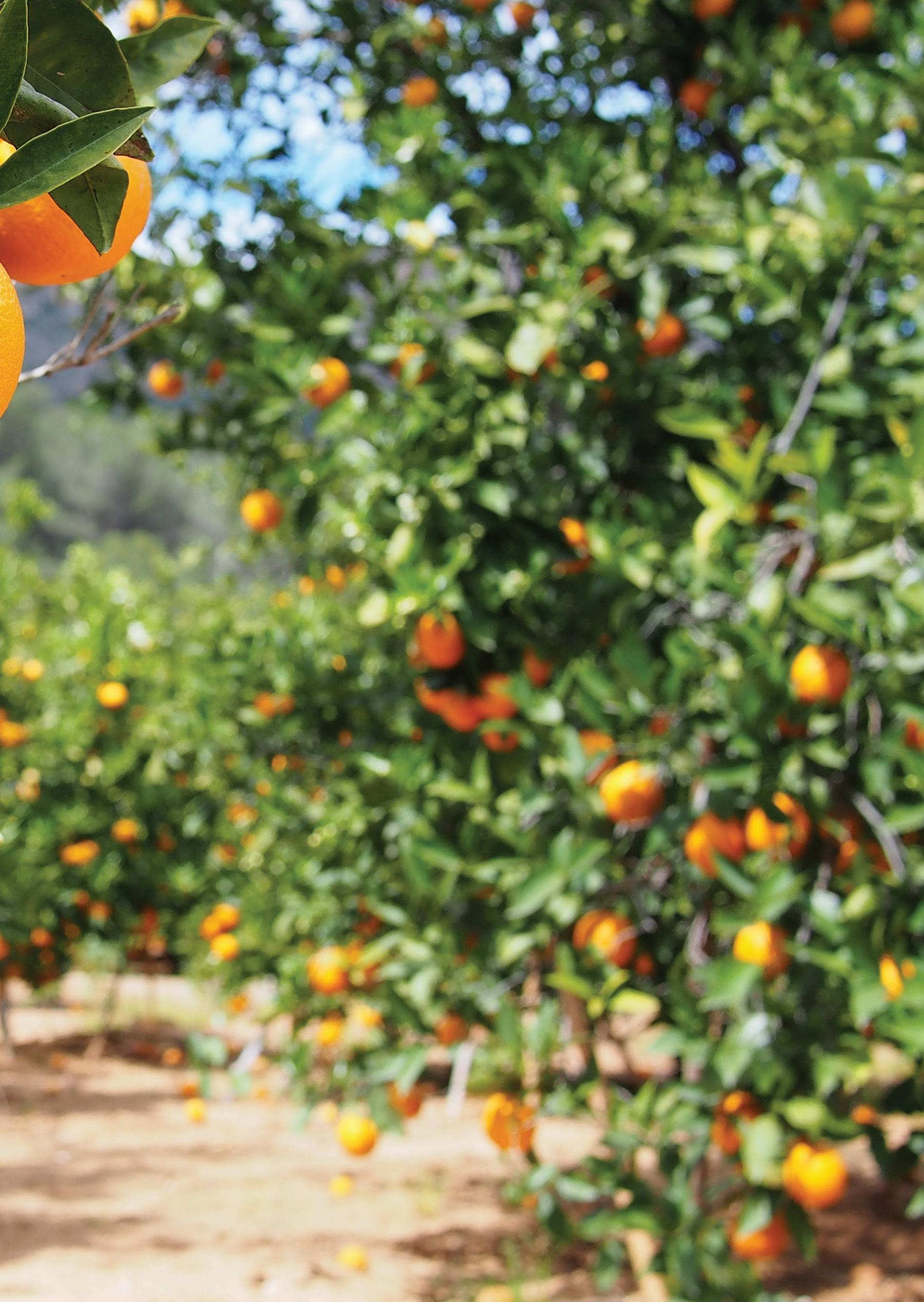
According to these poskim one is allowed to purchase from a market that is known to sell tevel However, perhaps one should still refrain in order to avoid supporting establishments that sell nontithed produce. The issue should be discussed with one’s local orthodox rabbi.
In short, the sale of tevel is prohibited. However, the purchase of tevel is permissible as long as it can be ensured that the buyer will indeed separate terumot and ma’asrot
Although one might assume that the sale of tevel to non-Jews is permissible, as they are not obligated to take terumot and ma’asrot, this is not the case.
In general it is prohibited to engage in commerce with forbidden foods (Mishna Sh’viit 7:3, Shulchan Aruch YD 117), but tevel does not fall into this category, since the food becomes permissible once tithes are separated (Yad Yitzchak 3:343, Shevet Kehati 1:386).
A source prohibiting the sale of tevel to non-Jews is found in the Tosefta (a compilation of preTalmudic rabbinic rulings that were not included in the Mishna). The Tosefta (Demai 1:11) states that one may not sell tevel to a non-Jew. However, the Tosefta does not explain the reasoning behind the prohibition. A number of explanations are given by later authorities. Rav Betzalel Ashkenzi (Responsa 1) suggests that selling to a non-Jew is actively annulling the obligation to take terumot and ma’asrot since non-Jews have no obligation to so. Tosfot (Gittin 25:A) writes that the sale of tevel is an extension of stealing; once the non-Jew has purchased the non-tithed produce, all the tithes, which should have been given to the Kohanim and Leviim, are negated. A third opinion is that of Rav Avraham Yitzchak Hakohen Kook (Mishpat Kohen 31), who explains the concern that once tevel is sold to a non-Jew, it might be sold back to a Jew, causing him to sin by inadvertently eating tevel. Many authorities cite the same reasoning as Rav Kook (see Chazon Ovadia Terumot Umaasrot p.131 and Halichot Sadei 65 p.14-20).
In Israel, it is unfortunately very hard to regulate and prevent the sale of tevel to non-Jews. The Israeli agricultural market is very dependent on export and mostly to non-Jewish companies. Many non-religious farmers have no interest in paying for kashrut supervision for overseas export to non-Jews. In addition, the Chief Rabbinate has no jurisdiction regarding exported fruit and vegetables, and it is quite common for produce to be exported overseas as tevel. These business deals are not in accordance with halachah.
Many poskim (see Chazon Ovadia Terumot Umaasrot 2:1) have discussed the case of a farmer who grows produce with the intention of selling it outside of Israel. If the produce was initially grown for that purpose, would the halachah be any different? The Bach (YD 331) seems to hold that if the intention was to send produce outside of Israel, they are exempt from the obligation. This is also the opinion of the Mahari Kurkus (Rambam Maaser 13:4), Rav Ovadia Yosef (Ibid) rules like the Bach as well, and cites other authorities who rule the same. However, an overwhelming number of halachic authorities completely dismiss this opinion (Radbaz Terumot 1:22, Mabit 2:196, Chazon Ish Demai 15:4). They cite earlier sources (see Raavad Terumot 1:22; Orchot Chaim Berachot 9) that once the produce ripens and is packaged in Israel, terumot and ma’asrot must be taken even after being transported outside of Israel and even if it is being sold to non-Jews. This was also the ruling of Rav Moshe Feinstein (Igrot Moshe YD 3:127) and Rav Aharon Kotler (Responsa Mishnat Rebi Aharon YD 40).
The OU makes a great effort to ensure that any produce certified under our supervision has had terumot and ma’asrot separated before shipment. The OU rules that it is forbidden to sell tevel to non-Jews. It is also the position of the OU that produce that was grown with the intention of being shipped overseas requires terumot and ma’asrot to be separated. However, it’s not so uncommon to find uncertified Israeli tevel produce being sold abroad, especially in proximity to Jewish communities. Thus, when finding Israeligrown produce abroad, one should confirm its status.
It is important to emphasize that this article should not be a deterrent to purchasing Israeli fruits and vegetables sold overseas. Rather, it should be viewed as an opportunity to support the Israeli economy and to merit the fulfillment of this mitzvah of separating trumot and ma’asrot The procedure is quite simple, and can easily be learned.
In conclusion, the fruit and vegetables can be sold at the school event although trumot and ma’asrot should be taken prior to the sale. It would be wise to mention to customers that all tithes have been taken according to halachah. For more information or step-by-step guidance on how to separate terumot and ma’asrot feel to contact our kashrut hotline.

Everything you need to know about
By Rabbi Ezra Friedman

The Ashkenazic custom is to refrain from the consumption of kitniyot on Pesach.
According to Biblical law, only food from the five grains that is leavened is prohibited to be owned or consumed on Pesach. Over the generations, many halachic authorities (S’mak 222, Terumat Hadeshen 113) ruled that it is prohibited to eat legumes (kitniyot) on Pesach for various reasons. The Pri Chadash (453) brings support for this practice from the Talmud (see Dinei Kitniyot BePesach p.3449). The Rema (OH 453:1), the main halachic authority for Ashkenazi Jewry, ruled that the custom of kitniyot must be followed.
In recent times, certain individuals have tried to abolish this sacred minhag (custom). This is a grave mistake. The minhag of kitniyot is based in solid halachic literature and is widely accepted amongst authorities. The Maharil (Hilchot Ma’achlot Asurot: 15) went so far as to say that someone who consumes kitniyot on Pesach transgresses the verse of “Lo tasur” (Devarim 17:11), the Biblical commandment to adhere to the rulings of our Sages. Leading poskim such as the Chayei Adam (127:1), Chatam Sofer (OH:122) and Aruch Hashulchan (453:4) wrote striking rebukes against those who ate kitniyot on Pesach.
However, the custom of kitniyot has also developed over the years and has expanded beyond its original decree. Consequently, there are specific areas where leniency may apply.
There are two underlying reasons for the minhag of kitniyot. The first is that kitniyot were grown in close proximity to the five grains, share a resemblance with them, and were harvested in a similar manner. All of these factors can cause chametz grains to easily get mixed in among the kitniyot, making them difficult to be detected and removed. The second reason is based on the fact that kitniyot were (and in some instances still are) ground into flour and made into bread or other baked goods. This could lead to error: consumers might mistakenly think these products are made with wheat flour and conclude that it is permissible to consume such goods containing wheat (or other species of the five grains).

The basic group of raw kitniyot includes the following: beans (all), buckwheat/kasha, caraway, cardamom, chickpeas, fennel seeds, fenugreek, grains of paradise, lentils,
There are two underlying reasons for the minhag of kitniyot. The first is that kitniyot were grown in close proximity to the five grains, share a resemblance with them, and were harvested in a similar manner.
millet, mustard seeds, peas, poppy seeds, rapeseed/canola, rice, sesame seeds, snow peas, sorghum, sugarsnap peas, and sunflower seeds. Regarding the qualification of peanuts as kitniyot, Rav Moshe Feinstein (OH 3:63) writes that only legumes that were common during the time that the minhag was instituted remain prohibited. New World crops are permissible, as the
minhag cannot be extended. Rav Moshe writes that there is room to be lenient and consume peanuts or peanut oil on Pesach. However, he goes on to mention that a custom does exist not to consume peanuts on Pesach.
As the custom to refrain from peanuts has been widely upheld, OU policy has been not to certify peanuts or peanuts derivatives for Pesach use.
Corn and soybeans are widely considered kitniyot even though they are New World crops. Why would these differ from the custom regarding peanuts? A possible explanation could be based on the underlying reasons for the minhag of kitniyot. Corn and soybeans are the classic form of kitniyot, as both underlying reasons apply. Corn is stored and grown near wheat and may be ground into flour and baked. The same is true with soybeans. However, this is not the case for peanuts, and therefore, they do not fall under the classic category of kitniyot. It is possible that this is why Rav Moshe Feinstein felt that there was room to be lenient regarding peanuts (See Seridei Eish 1:50, Mikraei Kodesh Pesach 2:60 and Chelkat Yaakov 207). Regarding OU policy, both corn and soybeans are considered kitniyot
In recent years many have approached the OU regarding the status of quinoa. Following an intensive multi-year investigation (which included visiting quinoa fields in Peru and Bolivia), as well as an internal debate, the OU decided it can certify quinoa for Pesach. This ruling is based on the fact that neither factor regarding the custom of kitniyot is applicable to quinoa. Quinoa is a new world crop. It is grown and stored separately from other crops and has not traditionally been used like grains for the preparation of bread or similar wheat-like products.

Quinoa is a new world crop. It is grown and stored separately from other crops and has not traditionally been used like grains for the preparation of bread or similar wheat-like products. It should be noted that quinoa is only fit for Pesach use if it has been supervised for the holiday and is labeled kosher for Pesach.
Regarding spices and the kitniyot custom, the Rema (Ibid) writes that spices such as anise and coriander were not included in the minhag of kitniyot. However, later authorities (see Mishnah Berurah 453:14; Taz 453:1) forbade using certain spices unless they were properly checked. Today, companies have mechanical means for cleaning these spices to ensure no foreign grains are mixed in. Therefore, the OU certifies spices, which undergo special supervision by a mashgiach who properly checks them. Cumin and dill are also certified by the OU for Pesach once they have undergone proper supervision.

The prohibition of chametz (leavened wheat) on Pesach includes consuming, owning, and benefiting from chametz. The custom of prohibiting kitniyot, on the other hand, does not have the same level of stringency. One may benefit from and own kitniyot (as long as there is no chametz mixed in) during Pesach (Rema Ibid, based on Terumat Hadeshen 113).

There is a biblical prohibition of feeding children non-kosher food (see Yevamot 114a). Similarly, feeding a young child or even a baby chametz is certainly prohibited (unless there is a dire medical need). Regarding the consumption of kitniyot for children, according to certain opinions, one may feed young children (up to age four) kitniyot if there is a considerable need (Chayei Adam 127:6). The prohibition of directly feeding nonkosher food to a child extends to Biblical and Rabbinic prohibitions. However, since kitniyot is a minhag (custom), there is room to be lenient for young children (see Shem Aryeh EH:95). For example, baby formula and cereals containing kitniyot may be given to babies. If the child is accustomed to a certain variety that contains kitniyot, it is permissible. Regarding baby formulas, almost all Israeli formulas contain kitniyot
Someone who is sick but not extremely ill and is in need of specific foods may consume kitniyot (Mishnah Berurah 453:7). Individuals with certain chronic medical conditions may also be permitted to eat kitniyot. For specific cases, one should consult with both their doctor and a competent halachic figure.

Derivatives of kitniyot include liquids and oils. Many responsa have been written regarding oils made from kitniyot (see Orach Mishpat OH: 111-114, Maharshag 2:43). Some authorities felt that the minhag does not extend to oils (Maharsham 1:183). Some allowed oils made from kitniyot especially when the kitniyot
had no contact with water during the processing (Marcheshet 3). However, many authorities disagree, and it has become the accepted custom to be stringent, even with oils and other derivatives (Responsa Maharil 25, Minchat Yitzchak 4:114).

Regarding mixtures of kitniyot in the food preparation process, the Rema (Ibid) holds that if kitniyot were to accidently fall into the food but there is a majority of non-kitniyot food, the kitniyot is nullified. Even though in regular circumstances halachah requires sixty times the amount of kosher food against the non-kosher food (see Mishnah Berurah 453:1), since kitniyot is a minhag there is

Regarding the consumption of kitniyot for children, according to certain opinions, one may feed young children (up to age four) kitniyot if there is a considerable need (Chayei Adam 127:6).
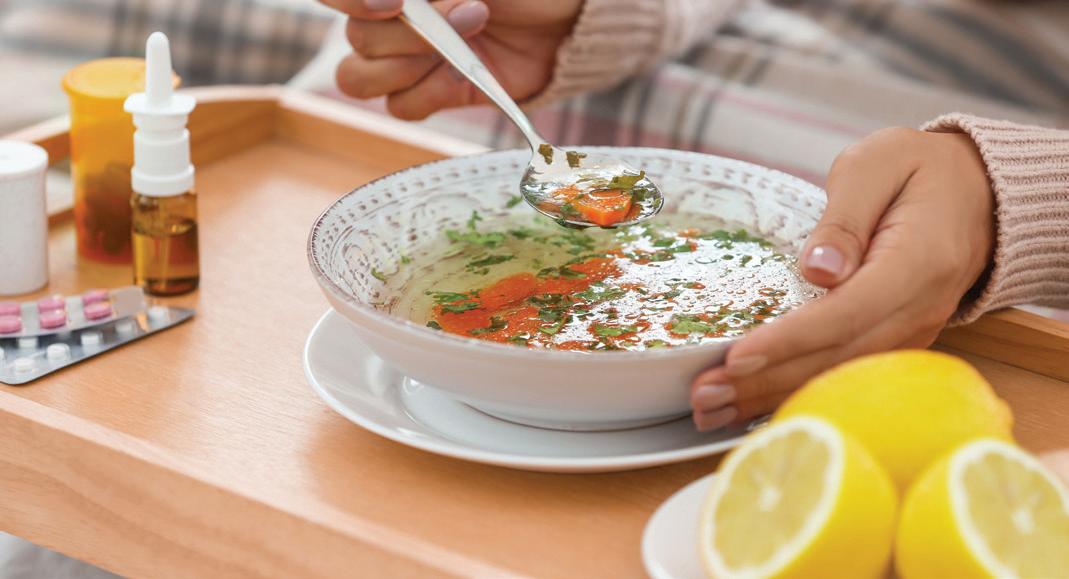
Someone who is sick but not extremely ill and is in need of specific foods
may consume kitniyot (Mishnah Berurah
453:7). Individuals with certain chronic medical conditions may also be permitted to eat kitniyot. For specific cases, one should consult with both their doctor and a competent halachic figure.
room to be lenient. For example, if mayonnaise containing kitniyot was accidentally used in a Pesach dish, according to the law recorded above, the dish would be permitted at the Seder table as the mayo is nullified by the majority.
However, the following exceptions apply: One may not apply the Rema’s ruling regarding mixtures to products that have kitniyot added for the specific intention of giving flavor. In addition, regarding the laws of nullification, if an ingredient is very substantial to the food, such as enabling the food to stick together (ma’amid), it may not be nullified even if there is a majority or even sixty times more kosher than non-kosher food. This halachah is relevant to foods and condiments that have kitniyot ingredients. In certain cases, it is prohibited to eat these foods even if the amount of kitniyot remains relatively small. Since the kitniyot additive is essential to the food, it does not become nullified despite being a mixture and may not be consumed (see Siddur Pesach Kehilchato 16:9).
Kitniyot shenishtaneh refers to a category of kitniyot that went through a fundamental chemical change during food production, producing a new substance. According to OU policy, if kitniyot underwent an extreme transformative process, the byproduct is permitted for Pesach use (under supervision to insure chametz-free status). Examples of kitniyot she’nishtanu that are permitted by the OU are ascorbic acid and aspartame made from chametz-free corn.
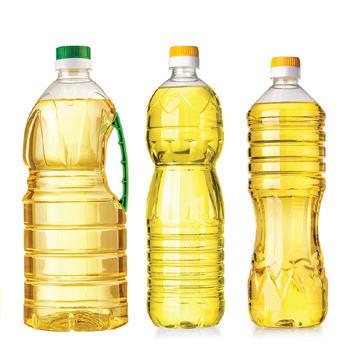
• The minhag (custom) of kitniyot is based in solid halachic literature, is accepted by early halachic authorities, and must be adhered to by Ashkenazi Jewry.
• The minhag of kitniyot include beans (all), buckwheat/ kasha, caraway, cardamom, chickpeas, fennel seeds, fenugreek, grains of paradise, lentils, millet, mustard seeds, peas, poppy seeds, rapeseed/canola, rice, sesame seeds, snow peas, sorghum, sugar-snap peas, and sunflower seeds. Peanuts are also included in the list of kitniyot
• Derivatives of kitniyot are also prohibited for consumption on Pesach. This includes liquids, oils (even when made without using water), and mixtures in which the kitniyot is essential to the food (ma’amid) or is mixed intentionally to give flavor.
• Some New World crops, such as corn and soybeans, are also included in the minhag. Following much research, OU poskim ruled that quinoa is not considered kitniyot and may be consumed for Pesach after being thoroughly checked.
• The OU certifies spices for Pesach when a mashgiach properly checks them and they are confirmed to be kosher for Pesach.
• As kitniyot is a custom, halachic authorities are lenient in regard to the consumption of kitniyot for those who are ill or have chronic medical conditions. One should consult with a competent halachic figure.
• Adults may feed young children (below the age of four) kitniyot based on need. Some authorities are lenient in regard to feeding children kitniyot who are slightly older. One should consult with a halachic authority on a caseby-case basis. Baby formulas and porridges containing kitniyot may certainly be given to babies.
• If a kitniyot item was accidently added to a non-kitniyot Pesach dish in which there is a majority by volume of nonkitniyot, the kitniyot ingredient is considered nullified and the dish is permitted for consumption on Pesach.
• Kitniyot she’nishtaneh refers to a category of kitniyot that went through a fundamental change during food production. According to OU policy, this category of kitniyot (when added to other products) can be granted OU certification for Pesach.

By Rabbi Ezra Friedman

There is no doubt that the main prohibition on Pesach is to consume, benefit from, or even own chametz. This halachah is not related only to Pesach itself. Chametz that was owned by a Jew during Pesach always has numerous practical implications for after Pesach as well. This article will explain the laws relating to chametz after Pesach.
The Mishnah in the second chapter of Pesachim (2:2) rules that chametz owned by a non-Jew throughout Pesach is permitted to benefit from and consume after the holiday, but chametz that was owned by a Jew during Pesach is prohibited, both to consume and to benefit from. This ruling in the Mishnah is a Rabbinic decree and not Biblical. Our Sages decreed that since the Torah prohibited having any type of chametz in Jewish possession during Pesach, such chametz becomes prohibited in any fashion. This includes consumption and benefit from chametz. Early authorities call this a “k’nas,” a rabbinic penalty, on transgressing the severe prohibition of possessing chametz on Pesach (see Rambam, Chametz Umatzah 1:4). Chametz which was owned by a Jew during Pesach is called in halachic language “chametz sheavar alav haPesach”, i.e., chametz which was in a state of prohibition during Pesach (as opposed to chametz owned by a non-Jew).
The parameters of chametz after Pesach are unique. In other Rabbinic decrees, there is a distinction between the perpetrator of the sin and others. For example, if a person deliberately transgresses and cooks on Shabbat, the food is prohibited forever for the transgressor, but the law is different for others (see Shulchan Aruch OC 318:1). Regarding chametz that was owned by a Jew on Pesach, however, every Jew in the world is forbidden to consume such chametz. The Aruch Hashulchan (OC 448:7) explains that since chametz is a necessity, there are concerns that if chametz sheavar alav haPesach were permitted to some and prohibited to others, people would find loopholes to consume the chametz.
As mentioned above, another parameter of the prohibition of chametz after Pesach is benefit. Not only is consumption prohibited, but any type of benefit from the chametz is prohibited as well. This includes selling it and using the funds. Feeding one’s animals such chametz is also considered benefit.
Early authorities (Tur OC 448) rule that even if one mistakenly forgot that he had chametz somewhere and did not perform a bedikah (checking for chametz), such chametz is still prohibited to eat or benefit from after Pesach. The same is true if someone verbally nullified the chametz but did not destroy it on time, even if he accidentally forgot; the chametz is still prohibited after Pesach (Shulchan Aruch OC 448:5, Mishnah Berurah OC 448:25). These stringencies are based on the logic that if our Sages would allow accidental chametz sheavar alav haPesach, it would be used as a loophole. Those who want to keep such chametz over the holiday would claim that it was accidental, when in fact it was kept on purpose.
Later authorities tackle the status of chametz where the individual was forced, (in Hebrew, “anoos”) meaning he had absolutely no control and is completely free of blame. For example, in a case where an individual checked properly for chametz, found nothing, and followed the Sages obligation to verbally nullify all possible chametz in one’s domain, what would be the status of chametz found after Pesach? Would it also be considered chametz sheavar alav haPesach?
The Pri Chadash (OC 448:5) Noda B’Yehudah (OC 19) and others rule stringently and prohibit consuming or benefiting from such chametz. The logic of these poskim is that a loophole is still possible, and under no circumstances would our Sages allow an opportunity for anyone to claim they are not liable when the act was done with intent to keep the chametz. Elyah Rabbah (448:13) and

If someone realized he had an expensive bottle of whisky that was not sold for Pesach, he may ask a non-Jew to take it as a present on erev Pesach. If the non-Jew decides to give it back after Pesach, it may then be consumed.
Mishnah Berurah (448:9) are slightly less stringent, and in such a case would allow one to benefit from but not consume the chametz. However, Chok Yaakov (448:20), Aruch Hashulchan (448:8), and others are lenient on both. According to those poskim, the Rabbinic decree should not be extended so far. As such, in a case where the possession is completely inadvertent and there is absolutely no responsibility on the owner who overlooked chametz, our Sages did not decree such a rule
regarding chametz after Pesach. Later authorities (see Biur Halachah 443) discuss someone who was unable to destroy or sell his chametz until after midday on erev Pesach. Many later authorities are lenient in this case since the prohibition of eating chametz on erev Pesach comes from verses regarding korbanot (sacrifices), and our Sages expanded it to prohibit benefiting from chametz on erev Pesach as well. Since erev Pesach is not part of the original Biblical prohibition of eating and benefiting from chametz, one may be lenient if chametz was sold or given to a non-Jew before dusk on erev Pesach. (See Pri Megadim 448, Mishbetzot Zahav 6, Sha’agat Aryeh 79, Sha’arei Teshuvah 448:15). For example, if someone realized he had an expensive bottle of whisky that was not sold for Pesach, he may ask a non-Jew to take it as a present on erev Pesach. If the non-Jew decides to give it back after Pesach, it may then be consumed.
All pure chametz products are included in the decree of chametz she’avar alav haPesach. This includes bread, pasta, cookies and the like. (Mixtures, such as soup powders, will be discussed in a separate article.) Later authorities disagree regarding the status of chametz smaller than a kezayit (a halachic measurement, between 11 and 50 cc). It would seem from the Magen Avraham (see Biur Halachah 447) that since less than a kezayit of chametz is not included in the Biblical transgression of chametz on Pesach, there is room to be lenient and benefit from such an amount after Pesach. However, the Chazon Ish (OC 116:18), based on various sources, rules that there is no difference regarding size or volume, and that even the smallest crumb is included in the decree of chametz she’avar alav haPesach
(see Vilna Gaon 447). It seems appropriate to rule like the Chazon Ish. For example, if a small bag of breadcrumbs (that was not sold) containing a very small amount was found after Pesach, it should not be used and must be thrown away.
Early halachic authorities discuss the status of wheat flour as it relates to the prohibition of chametz on Pesach. The production of flour has changed over the generations. Wheat kernels are generally tempered with water before grinding, and certain flours are tempered after the grinding process as well. Based on research and supervision of flour mills both in Israel and around the world, the OU rules that flour is generally considered safek chametz (doubtful chametz) and perhaps even chametz gamur (definite chametz). As such, flour must be sold or disposed of before Pesach. Regarding the prohibition of chametz after Pesach, the same rule applies. Therefore, flour that was not sold may not be consumed after the chag. Regarding the issue of benefit, one should consult with a competent halachic authority.
The prohibition of chametz on Pesach has many stringencies. For example, chametz which is found in a mixture is included in the prohibition of owning chametz on Pesach (see Mishnah Berurah 442:1). When our Sages instituted the decree of chametz she’avar alav haPesach (chametz owned by a Jew during Pesach, which is also forbidden after Pesach), it was based on the Biblical prohibition of owning chametz on Pesach. In other words, any chametz that is prohibited to own on Pesach would be included in the decree of

Certain cosmetics may contain chametz such as wheat alcohol. However, since the chametz in them is almost certainly chametz nukshe and is in a mixture, one may be lenient and use them after Pesach.
chametz she’avar alav haPesach. Any mixture that contains actual chametz that is greater than 1/60 of the product is subject to the Biblical prohibition of bal yera’eh and bal yimatzei (Jewish ownership on Pesach) and to the decree of chametz she’avar alav haPesach. Even if the chametz is less than 1/60 of the mixture, if the chametz is an essential ingredient in the product, the product is forbidden after Pesach. One common application is when the chametz is a davar hama’amid (a component that is essential to hold the food or texture together). Another example is strong flavor. Any chametz additive that gives the dominant flavor is included in the
decree of chametz after Pesach, even if it is less than 1/60 of the mixture. Many modern products have mixtures of chametz and are included in the prohibition of chametz after Pesach. This can include soup mixes, sauces, syrups and much more. If such a product was accidently purchased on Pesach or was not included in one’s sale of chametz, it must be thrown away. Since the prohibition of chametz she’avar alav haPesach includes both consumption and benefit, one may not give such food as a gift, even to a non-Jew, or feed it to one’s animals. As previously mentioned, this applies to all Jews and not just to the original owner.
Chametz nukshe refers to chametz that had something wrong with its fermentation; either it did not become completely fermented, or it was not fully fit for human consumption (only barely edible). According to the Magen Avraham (OC 447:46), pure chametz nukshe is not included in the prohibition of chametz she’avar alav haPesach. While many authorities, including the Mishnah Berurah (447:107), do not accept this ruling, chametz nukshe in a mixture is a much easier case. Such a mixture is permitted after Pesach as long as the chametz nukshe is not more than fifty percent of the total (Pri Megadim 442 EA:2).
Certain cosmetics may contain chametz such as wheat alcohol. However, since the chametz in them is almost certainly chametz nukshe and is in a mixture, one may be lenient and use them after Pesach. Regarding medicines, there is a difference between edible medication and nonedible tablets that are swallowed. Edible chametz medication which has flavor is included in the decree of chametz she’avar alav haPesach. However, one should consult with a pharmacist to determine if there is actual chametz in the medication. Nonedible tablets that are swallowed do not normally contain chametz. In a case where chametz is in the formula (such as specific vitamins, homeopathic pills
and certain prescription drugs), one may be lenient and use these pills after Pesach. The basis for this leniency is the fact that any chametz found in nonedible medication is certainly chametz nukshe, and it is found in a mixture (Nitei Gavriel 60:10). In addition, since the medication is swallowed and not consumed like regular food, in halachic terminology it is considered for benefit rather than for consumption, in which case many poskim are lenient (see Emunat Itecha 47).
In a case where a utensil was used for chametz on Pesach, the utensil itself is not included in the decree of chametz she’avar alav haPesach and is permitted after the chag without kashering. The Shulchan Aruch HaRav (OC 447) explains that since chametz which was absorbed in utensils is not included in the Biblical prohibition of owning chametz on Pesach, our Sages did not extend the decree to include utensils after Pesach, even if someone purposely cooked chametz during the chag. Similarly, non-chametz food cooked in chametz utensils before Pesach, such as soup (which could theoretically be kosher for Pesach), is permissible for consumption after Pesach, since flavor from a pot is not included in the decree of chametz she’avar alav haPesach (Pri Megadim 442 EA:9, Mishnah Berurah 442:1).
• Our Sages decreed that chametz that was owned by a Jew on Pesach is prohibited to eat or benefit from.
• This prohibition extends not just to the owner of the chametz, but also to all Jews.
• Benefit includes selling the chametz and using the funds, as well as feeding the chametz to one’s animals.
• Even chametz which was accidentally left over Pesach is part of this decree.
• In a case where chametz was left completely inadvertently, later authorities disagree and there is room to be lenient.
• Chametz that was sold or given away to a nonJew between midday and dusk of erev Pesach may be consumed after Pesach.
• All pure chametz products, such as bread, pasta, etc., are included in the decree.
• Chametz smaller than a kezayit and flour are both included in the prohibition of chametz she’avar alav hapesach if they were not sold to a non-Jew before Pesach.
• Mixtures containing chametz are included in the decree of chametz after Pesach which was owned by a Jew on Pesach, both for consumption and benefit. Such food is forbidden to all Jews. One may not feed it to one’s animals or use it for gifts.
• The decree applies where chametz is greater than 1/60 of the mixture. In a case where the chametz is an essential ingredient, even a miniscule amount is prohibited.
• Chametz nukshe on its own is included in the decree, but if it is less than 50% of a mixture, there is room to be lenient.
• Cosmetics containing chametz are permitted after Pesach, even if they were owned on Pesach.
• Flavored medicines that are edible, such as syrups and chewable tablets, might be included in the decree.
• Non-edible medicine (e.g. pills that are swallowed) that contains chametz may be used after Pesach.
• Utensils that had chametz cooked in them on Pesach are permitted after Pesach without kashering.
• Food (that does not contain chametz) that was cooked in chametz utensils before Pesach is permitted after Pesach.

Sign up for the OU daily sefirah reminder email @ www.ou.org/sefirah
Sefirah is the counting of seven complete weeks from the second evening of Pesach until Shavuot. The count, which takes place after night fall for the following day, is preceded by the blessing only if done in the evening and no days have been missed in the count.
Visit www.ou.org/sefirah to receive an email reminder to count each day. Emails are pre-programmed to go out on each of the 49 days of the Omer to help make sure you don’t forget to count!
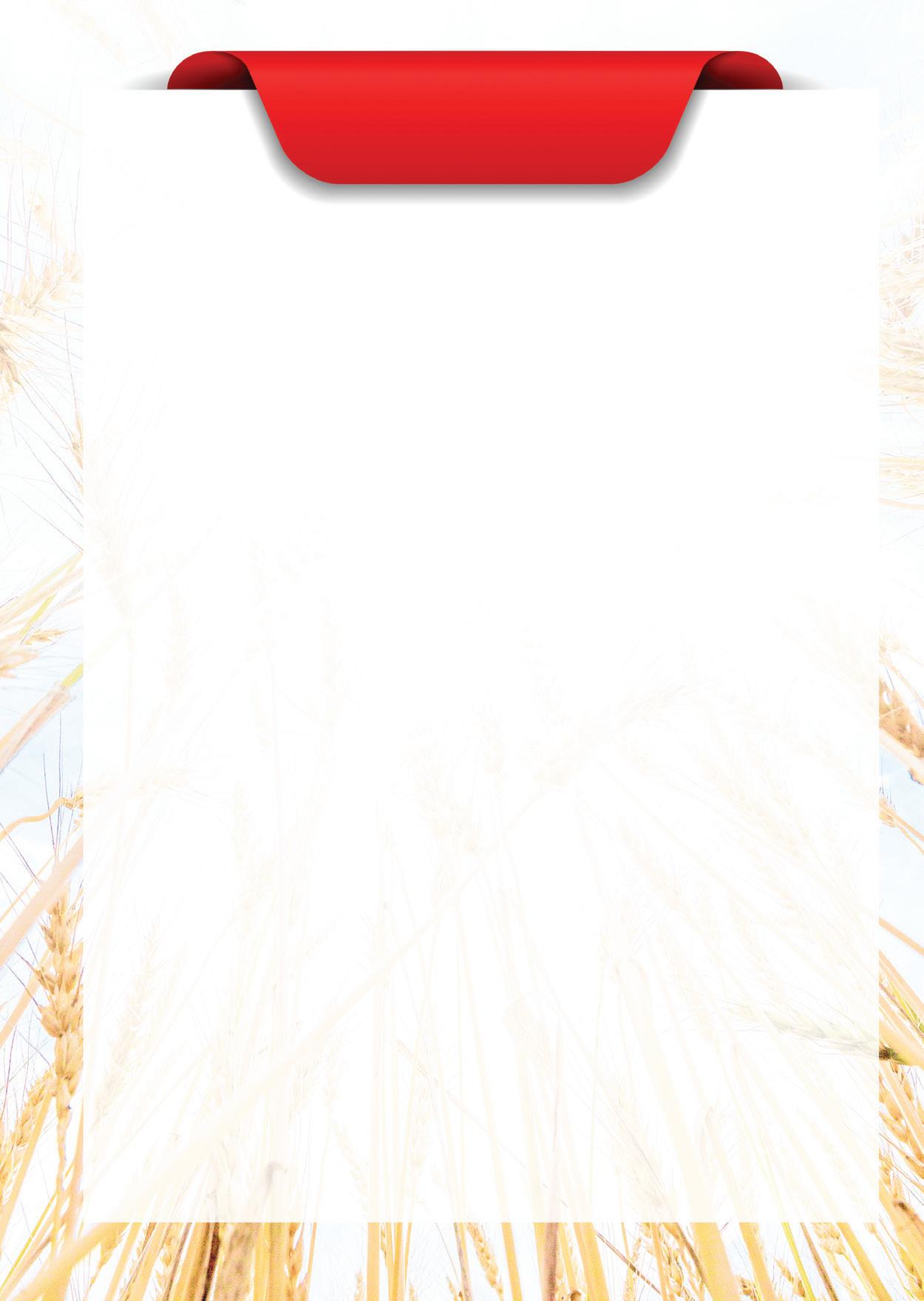
NOTE: IF YOU FORGET TO COUNT AT NIGHT, YOU MAY COUNT ALL OF THE NEXT DAY – BUT WITHOUT A BLESSING YOU MAY RESUME COUNTING THE NEXT EVENING WITH A BLESSING.
















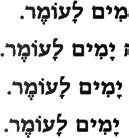







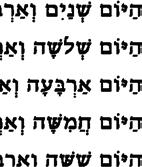

AASHKENAZIM (םיזנכשא) – a Jewish ethnic group which originated from Western and Eastern Europe. The customs of Ashkenazim differ from SEFARDIM.
ARAVA DROMIT (הברע תימורד), Southern Arava –A region in the southern Negev desert that is considered to be CHUTZ LA’ARETZ and thus exempt from certain MITZVOT HAT’LUYOT BA’ARETZ (TERUMAH, MA’ASER, SHEMITTAH). Authorities dispute the exact location and borders of this area.
ACHRONIM (םינורחא)
The great rabbis in the era following the SHULCHAN ARUCH, from the fifteenth century to today.
ATZITZ NAKUV (ץיצע בוקנ lit. “Perforated flowerpot”) – A flowerpot or planter with holes on the bottom. Halachically,
The following glossary includes additional terminologies relating to kashrut beyond the scope of this guide, to enhance the reader’s overall familiarity with kashrut related topics. This glossary has been updated to include Pesach terminology.
such a receptacle is considered connected to the ground. All halachot pertaining to vegetation grown in the ground apply to produce grown in an atzitz nakuv. Authorities debate how large a pot’s holes must be in order for it to be considered an atzitz nakuv.

ATZITZ SHE’EINO
NAKUV (בוקנ וניאש ץיצע lit. “non-perforated flowerpot”) – A flowerpot or planter that’s completely sealed on the bottom. Our Sages decreed that anything growing in an atzitz she’eino nakuv is obligated on a rabbinic level in all halachot pertaining to produce grown in the ground. Authorities debate whether certain halachot don’t apply to atzitz she’eino nakuv.
BBADATZ (ץ”דב, acronym for קדצ ןיד תיב) – Private Israeli kashrut certification. Not all badatzim have the same standards. Not affiliated with the Chief Rabbinate.
BAYIT SHENI (ינש תיב) The Second Temple, which stood in Jerusalem from 3622 (139 CE) to 3829 (69 CE).
BEDI’AVAD דבעידב); “after the fact” – A less than ideal approach to a halachic issue, based on circumstances that have already occurred.
BEIT DIN (ןיד תיב; lit. “house of judgment”) –Court of three rabbis, certified as Torah judges, which rules based on halachah.
BERACHAH (הכרב) – Blessing, usually referring to a prescribed text recited before or after performing various actions.

BESARI (ירשב) Meaty, fleishig – This term appears on kashrut certificates issued to restaurants serving meat as well as on products which contain meat.
BISHULEI AKUM (ילושיב ם”וכע) – Kosher food cooked by a non-Jew which is prohibited for consumption by Jews. Only certain foods are included in the prohibition. Foods not included in the prohibition may be fully cooked by non-Jews.
BISHUL YISRAEL (לושיב לארשי) – Kosher food cooked by Jews. There is a dispute among authorities as to how much Jewish intervention is required
in order to deem the food bishul Yisrael rather than BISHULEI AKUM. Not all food requires bishul Yisrael.
BIUR (רועיב) – The act of removing SHEMITTAHsanctified produce from one’s possession.
CCHADASH (שדח lit. “new”) – Grains wheat, barley, oats, spelt and rye) that have been planted after the fifteenth of Nisan and reaped before the fifteenth of Nisan of the next year is considered chadash and may not be consumed until the latter date passes.
CHALAV AKUM (בלח ם”וכע) – Milk from a kosher animal which was milked by a nonJew without any Jew present or in close vicinity. Our Sages decreed that chalav akum is prohibited for consumption.
CHALAV STAM (םתס בלח) – Milk that was milked from a kosher animal by a non-Jew in a place with government supervision. The governing body also fines companies that break such regulations and holds them accountable. This supervision protects against any tampering with the milk, including adding milk from other animals.
CHALAV YISRAEL (בלח לארשי) – Milk that was milked from a kosher animal by a Jew, or alternatively, by a nonJew while a Jew was present or in close vicinity.
CHALAVI (יבלח) – Milky, milchig, listed on certificates or labels to state that a restaurant or food is dairy.
CHALAK (קלח lit. “smooth”) – Refers to the smoothness of the lungs of a cow. This term is used to define if beef is glatt kosher. In Israel, not all meat is glatt. The term is also commonly misused regarding the kosher status of slaughtered chickens, although in certain circles it has become accepted as a term to define a higher standard for the SHECHITAH of chickens.
CHAMETZ- (ץמח) - Grains (wheat, barley, oats, spelt or rye) that have been mixed with water and not baked within 18 minutes. Any chametz or product containing chametz is prohibited for consumption or benefit throughout the seven days of Pesach.
CHARAKIM (םיקרח) –Insects, see TOLAI’IM.
CHUMRAH (הרמוח) –Stringency in observing Jewish law within and sometimes beyond halachic requirements.
CHUTZ LA’ARETZ (ץוח ץראל; lit. “outside the land”) – Any location outside the land of Israel.
DDEMAI (יאמד) – All fruit that carries a doubt as to whether halachic tithes were taken.
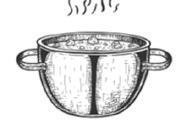
HHAGALAH (הלעגה) – The procedure for kashering utensils using boiling hot water.
HANA’AH (האנה) –Benefit. It is forbidden to benefit (sometimes even indirectly) from certain prohibitions or transgressions.
HARABBANUT
HARASHIT (תישארה תונברה) – Chief Rabbinate. In Israel there is a state rabbinate that oversees matters such as kashrut, to a minimum halachic standard.
HASGACHAH TZEMUDAH (הדומצ החגשה lit. “tight supervision”) -The term refers to production where a mashgiach is on site throughout the entire production.
HAVLA’AH (העלבה, lit. “swallowing”) – Bundling, packaging, i.e., the practice of overpaying
for one item or service in order to receive another as well.
HETER MECHIRAH (רתיה הריכמ, lit. “dispensation based on sale”) – Circumvention of SHEMITTAH observance by selling or leasing land in Israel to a non-Jew for the duration of the SHEMITTAH year.
IISUR VE’HETER (רוסיא רתיהו lit. “the prohibited and the permissible”) –The halachic expression pertaining to kashrut and dietary laws.
LEMEHADRIN (רשכ ןירדהמל חספל) -The term appears on restaurants or establishments during Pesach. Normally the mehadrin term refers to products not containing kitniyot, although they may contain sheruyah products (gebrochts).
KEDUSHAT SHEVI’IT (תיעיבש תשודק,lit. “holiness of the seventh”) –SHEMITTAH sanctity. The term applies to produce that grew in Eretz Yisrael during the SHIMITTAH year.
KILAYIM (םיאלכ) –Forbidden mixtures, such as the prohibition on planting certain different species together.

KITNIYOT (תוינטק lit. Legumes) – many early halachic authorities rule that there is a binding custom not to consume certain types of legumes during Pesach. The custom is observed by Jews of Ashkenazic ancestry and certain Sephardi communities as well; other Sephardic Jews do consume kitniyot on Pesach.
LL’CHATCHILAH (הליחתכל, lit. “from the outset”) – In the most ideal manner, i.e., the way one should ideally approach an issue of halachah.

LIBUN (ןוביל) The method of kashering utensils using an open flame. There are two different types of libun: libun kal and libun chamur.
LELO CHASHAH
KITNIYOT תוינטק ששח אלל lit. “Without any concern of kitniyot”). The term appears on many foods that are certified kosher for Pesach. It testifies that those who keep the custom not to consume kitniyot may consume such a product.
LE’OCHLEI KITNIYOT
BILVAD (דבלב תוינטק ילכואל lit. “only for those who consume kitniyot”). The term may appear on food certified kosher for Pesach. It testifies that only those who have the custom to eat kitniyot on Pesach may consume this product.
LIFTIT/ MECHIL LIFTIT
(תיתפל ליכמ/תיתפל lit. “contains rapeseed”)Later authorities dispute whether rapeseeds are included in the custom of those who do not consume kitniyot. The term appears on food that does not contain actual kitniyot yet contain rapeseed oil (more commonly known as canola oil).
MMA’ASER pl. MA’ASROT (תורשעמ) – Tithes that one is obligated by Jewish law to remove from produce grown in the land of Israel.
distribution of TERUMAH and MA’ASER RISHON, which in the times of the Temple would be brought to Jerusalem. If the quantity of the ma’aser was too large to transport, it was redeemed monetarily on animals for sacrifices or on food consumed in Jerusalem. Today, all MA’ASER SHENI is redeemed through money. The money is not spent and remains “holy.”
MATZA MENUTAK (עצמ קטונמ; lit. “separated surface”) – Methods of growing produce during SHEMITTAH in indoor greenhouses on raised surfaces and disconnected from the ground.
MASHGIACH pl.
MASHGICHIM (חיגשמ) – Kashrut supervisors. Normally mashgichim are on-site workers supervising kosher production. The amount of time the mashgiach needs to be present depends on the type of food and production.
MATZVOT AVODAT YAD (די תדובע תוצמ) – Kosher matzah made by hand.
MATZOT MECHONAH/ MACHINE (/הנוכמ תוצמ ןישאמ) – Kosher matzah made using machinery. There is doubt regarding whether every mechanical function, such as using an electric, rather than manual, grinder would define matzah as machine-made.
MEHADRIN (ןירדהמ) –Exceeding the minimum standards of halachah, generally associated with kashrut, although many standards and opinions exist regarding what exactly is considered “mehadrin”. The subject of mehadrin is very subjective and complex. One should consult with their rav.
MEHUDAR (רדוהמ, lit. “beautified”) –Exceeding minimum halachic standards or requirements.
MINHAG (גהנמ) – custom, normally refers to customs in the area of halachah.
MA’ASER RISHON (רשעמ ןושאר lit. “First Tithe”) – A tenth of what is left in the grain or produce after the distribution of TERUMAH. By Biblical law, the tenth is set aside and given to the Levites.
MA’ASER SHENI (רשעמ ינש lit. “Second Tithe”) – A tenth of the crop remaining after the
MATZOT CHAI DAKOT (תוקד י”ח תוצמ) - Kosherfor-Pesach matzah. The process of mixing, kneading, shaping and inserting into the oven is completed within 18 minutes.
MATZOT CHAI REGA’IM (םיעגר י”ח תוצמ) – Another term for MATZOT CHAI DAKOT; see above.
MITZVOT HAT’LUYOT BA’ARETZ (תווצמ ץראב תויולתה) – Torah commandments pertaining to the land of Israel, mostly referring to agricultural laws.
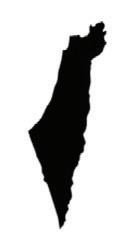
NETA REVAI (יעבר עטנ)
– Produce of a tree in the fourth year of its growth, after the prohibited three-year ORLAH period has passed. The fruit needs to be eaten in a certain part of YERUSHALYIM or redeemed on a coin. Today all NETA REVAI is redeemed and not eaten in YERUSHALAYIM
NOCHRI (ירכונ; lit. “stranger”) – non-Jew.
sanctified in the time of the First Temple. The area wasn’t reconquered by the Jews during their return from Babylonia. According to certain authorities, one may be lenient regarding the mitzvot of the land of Israel (TERUMA, MA’ASER, SHEMITTAH) in these areas.

ORLAH (הלרע) – The Torah prohibition on eating fruit that grows from a tree during the first three years after it was planted.
authorities and later poskim regarding the validity and extent of this prohibition.
PAT YISRAEL (לארשי תפ) – Kosher bread from any of the five grains (wheat, barley, oats, spelt and rye) baked by a Jew. It is sufficient for a Jew to have minimal involvement in the baking process in order to deem the bread pat Yisrael. For example, according to all opinions, if a Jew lit the oven and a non-Jew placed the bread in the oven, the bread is considered pat Yisrael.
SEPHARDIM (םידרפס lit. “those from Spain”) – a Jewish ethnic group originating from Spain, North America, the middle east and western Asia. This group has a wide range of customs regarding kashrut which varies from that of ASHKENAZIM.
OLEI BAVEL (לבב ילוע lit. “those who made aliyah from Babylonia”)
– The territories of the land of Israel that were conquered by the Jews who moved from Babylonian at the beginning of the Second Temple and were sanctified by Ezra and his BEIT DIN. This conquest of the Jews is also called “second holiness” (Kedushah Sheniyah). It is universally accepted that this area is biblically obligated in the MITZVOT HAT’LUYOT BA’ARETZ.
OLEI MITZRAYIM (ילוע םירצמ lit. “those who made aliyah from Egypt”) – The territories of the land of Israel that were conquered by the Jews in the days of Yehoshua Bin Nun and were sanctified by Yehoshua Bin Nun and his beit din, and ended in their conquest in the days of King David and were
OTZAR BEIT DIN (רצוא ןיד תיב lit. “a storehouse [operated by] beit din”) – A system in which the beit din takes control of the growing conditions and the distribution process of produce during the SHEMITTAH year.
RRABBANUT MEHADRIN (ןירדהמ תונבר) – A higher standard of kashrut from local rabbinates. Not all local rabbinates have the same standard.
RABBANUT MEKOMIT
PACH SHEMITTAH (חפ הטימש lit. “SHEMITTAH Bin”) – A special bin/ waste basket for leftovers and edible peels of holy SHEMITTAH produce.
PAT AKUM (ם”וכע תפ) –Kosher bread from any of the five grains (wheat, barley, oats, spelt and rye) baked by a non-Jew. Early sources record a rabbinic prohibition against consuming pat akum. There is a dispute among early
(תימוקמ תונבר) – Local Rabbinate, municipal rabbinate in charge of kashrut for different jurisdictions. The local rabbinate follows the standards of the chief rabbinate and is an extension of the larger government organization.
RISHONIM (םינושאר; lit. “the First Ones”) – The great rabbis in the era preceding the SHULCHAN ARUCH, from the eleventh to fifteenth centuries
SAFEK (קפס) – A halachic doubt or question.
SEFICHIN (ןיחיפס; lit. “herbs”) – A prohibition enacted by the Sages forbidding the consumption of all selfseeded (and purposely grown) produce that sprouts during the SHEMITTAH year. Legumes, grains and vegetables are part of the decree. Fruit is not included.
SHA’AT HABIUR (תעש רועיבה) – Deadline by which one must renounce ownership of all SHEMITTAHsanctified products.
SHABBAT HA’ARETZ (תבש ץראה) – The sabbatical year of the land of Israel. Also a book on the laws of SHEMITTAH by Rav Avraham Yitzchak Hakohen Kook zt” l (18651935)
SHAMUR V’NE’EVAD (דבענו רומש; lit. “guarded and worked”) –SHEMITTAH produce that was guarded and/ or worked in a prohibited fashion.
SHECHITAH (הטיחש) –Ritual slaughter.
SHEMIRAT HAMITZVOT (תווצמה תרימש) –Observance of the commandments. A non-observant Jew isn’t trusted in certain halachic areas.
SHEMITTAH (הטימש) – The sabbatical year which takes place in the land of Israel according to Torah law (Vayikra 25:1–5). SHEMITTAH occurs every seven years, based on an ancient cycle. In a leap year, SHEMITTAH lasts thirteen months.
SHE’ERIYOT (תויראש lit. “leftovers”) – Leftover food or edible peels of holy SHEMITTAH fruit that may not be discarded in a regular manner.
SHERUYAH (היורש) –
Commonly known as gebrochts. Matzah that was baked properly and placed in liquid is not considered chametz. However a widelyobserved custom exists not to consume any matzah that was placed in any liquid after being baked. The term, which normally appears on foods or advertisement for programs refers, to the custom to either eat or not eat such matzah.
SHISHIT (תישש; lit. “the sixth”) – The sixth year of the seven-year SHEMITTAH cycle.
SHULCHAN ARUCH (ןחלוש ךורע; lit. “set table”) – The Code of Jewish Law. The Shulchan Aruch was written by Rabbi Yosef Caro in Safed in 1563. The Rema (Rabbi Moshe Isserles) added in his comments to this work
TTE’UDAT KASHRUT (lit. Certificate of Kashrut) –Certificate of kashrut for an establishment.
TERUMAH, TERUMOT
Kohen. Terumat ma’aser can only be consumed by a (ritually) pure Kohen while the produce is still ritually pure.
TEVEL (לבט) – Untithed produce grown in Israel. Such produce is prohibited for consumption until tithed.

TOLAI’IM םיעלות lit. “worms” – Non-kosher insects present in foods.
TZIBBUR (רוביצ). Community. The term is sometimes used in relation to a custom or practice of a certain group (see Avot 2:4
YYERUSHALAYIM (םילשורי). Jerusalem. Certain foodrelated mitzvot apply only in Yerushalayim, and even then, only on Har HaBayit (the Temple Mount) and in some sections of the Old City.
Jews. In many cases, the non-Jewish produce is from Palestinian farmers in Judea and Samaria. According to certain authorities, one should treat YEVUL NOCHRI with the sanctity of SHEMITTAH (KEDUSHAT SHEVI’IT).
YISHUV, the (בושיה; lit. “settlement”) – In context, this refers to the modern-day Jewish settlement of Israel.
YITZUR MEYUCHAD (דחוימ רוצי lit. special production) – Special kosher production performed at times at non-kosher factories worldwide. In Israeli plants, it refers to a special production carried out by private certifications.
YITZUR MEYUCHAD
LEPESACH דחוימ רוצי חספל): Special Pesach production run, performed at times at non-kosher-for-Pesach factories worldwide and in Israel.
SHEMINIT (תינימש lit. “The Eighth Year”) –The year following the SHEMITTAH year. Certain halachot pertaining to SHEMITTAH apply to the eighth year as well.
SHEVI’IT (תיעבש; lit. “the seventh”) – The seventh year of the seven-year SHEMITTAH cycle. See SHEMITTAH
(תומורת; lit. “Removed portions”) – A type of tithe given to the Kohen. Terumah can only be consumed by a (ritually) pure Kohen while the produce is still ritually pure.
TERUMAT MA’ASER
(רשעמ תמורת) – A tithe given from the Levi to the Kohen. A tenth of the MA’ASER RISHON the Levi received is given to the
YEVUL CHU”L (ל”וח לובי lit. “Diaspora Crop”) –Produce imported from non- Jewish farmers living outside ERETZ YISRAEL. According to all opinions there is no need to keep the sanctity of SHEMITTAH (KEDUSHAT SHEVI’IT) with yevul chul.
YEVUL NOCHRI (ירכונ לובי lit. “Non-Jewish Crop”) – Produce marketed during SHEMITTAH from farms in Israel owned and controlled by non-
YASHAN (ןשי lit. “old”). Grain (wheat, barley, oats, spelt and rye) harvested after the fifteenth of Nisan and therefore permitted for consumption.
YOVEL (לבוי) – The jubilee year which following seven SHEMITTAH cycles. Authorities debate whether yovel is the forty-ninth year (coinciding with SHEMITTAH) or the fiftieth. Among the unique halachot of yovel, certain land purchases must be returned to their original owners, and Jewish slaves go free.
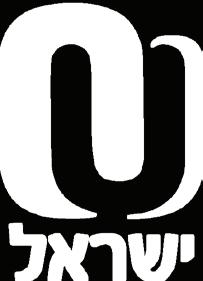



XL BATTERY with your purchase of a SHABBATTO (up to 40 km range)
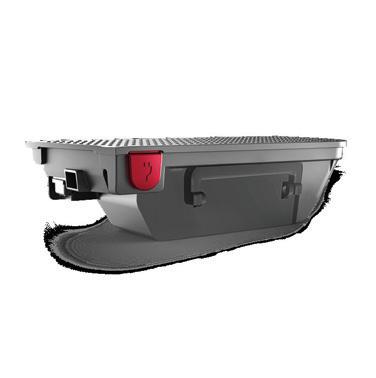
Enjoy uninterrupted mobility throughout Pesach.
Are you struggling to get to shul on Shabbat? Is it hard to bring your mobility scooter when you visit your children for a beautiful Shabbat together? Dreaming of a worry-free vacation abroad? With the SHABBATTO mobility scooter, anything is possible! It features an integral “mehudar” mechanism, and therefore doesn’t require tricky and costly installation, as in other scooters.


Spacious legroom and high ground clearance.

Splits into 2 lightweight parts, for easy lifting. Wheels like a trolley and is approved for air travel.
For more information and a free, no-obligation home demo: Office address: 16 HaGanan St., Modiin
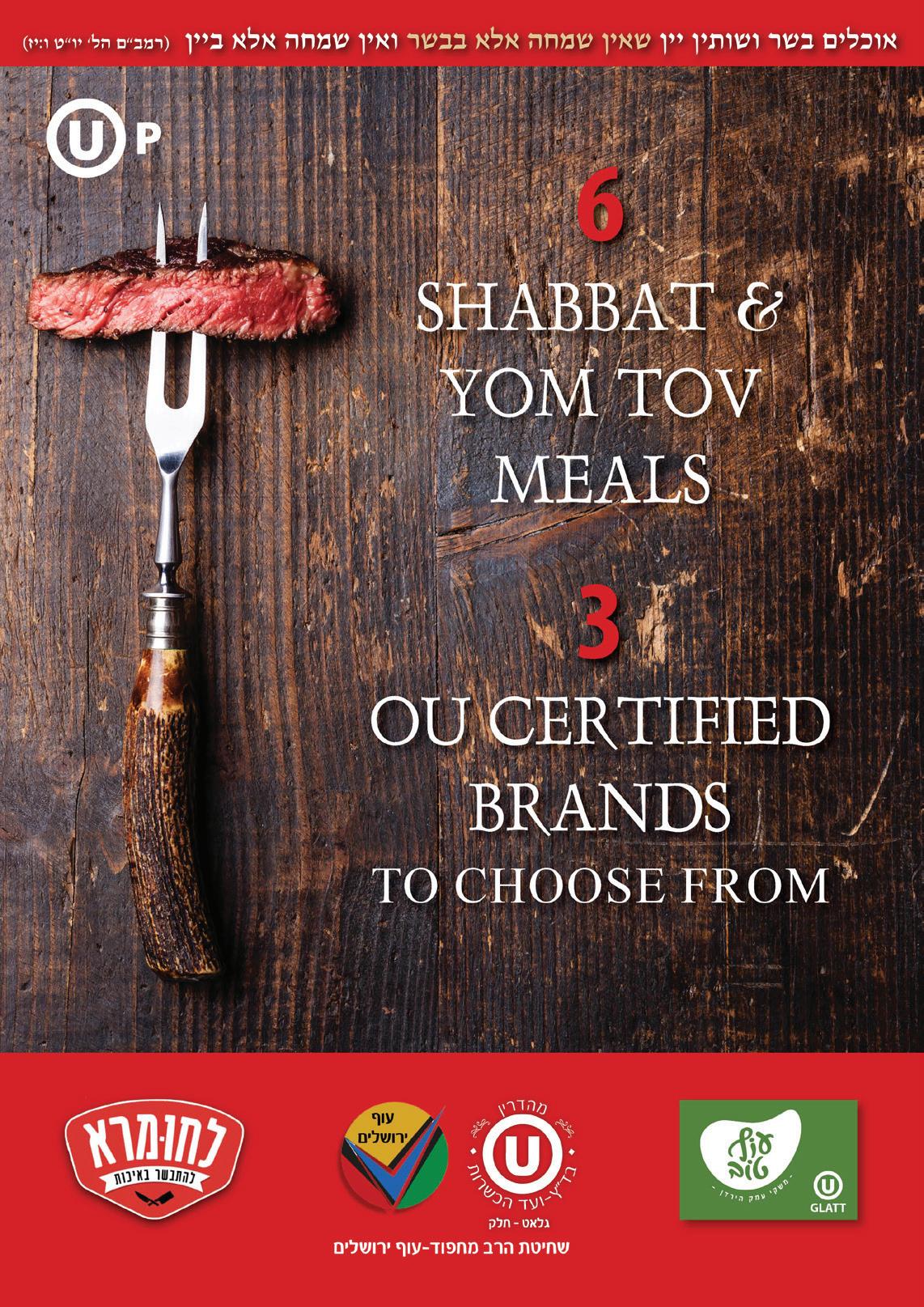

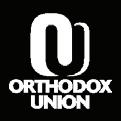
Building Vibrant Religious Communities for Young Adults, Students, and Lone Soldiers Across the Country.

Our Stats
10 Campuses and Communities in Israel
2017 1st Campus in Israel
3,000
JLIC Israel participants
20+ Countries Represented
50%+ Made Aliyah in Adulthood
Ariel University · Bar-Ilan University / Givat
Shmuel · Ben-Gurion University / Beer Sheva
·JCT - Lev · JCT - Tal · Jerusalem · M.D. Katz @ Tel Aviv University · Technion / Haifa · Tel Aviv · Reichman University / Herzliya
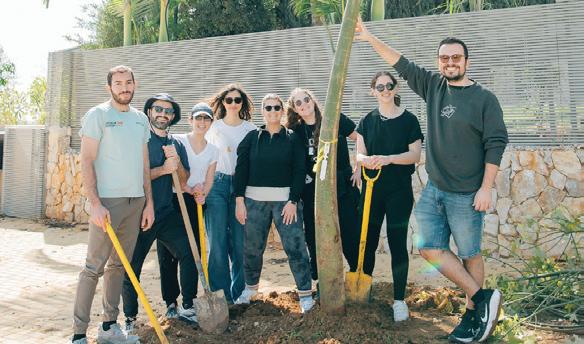
“JLIC made my move to Israel seamless, giving me a home-like community, meaningful Shabbat experiences, and a strong social and religious connection.”
Get in touch with our campus and community directors: oujlic.org/israel instagram: @jlicnational


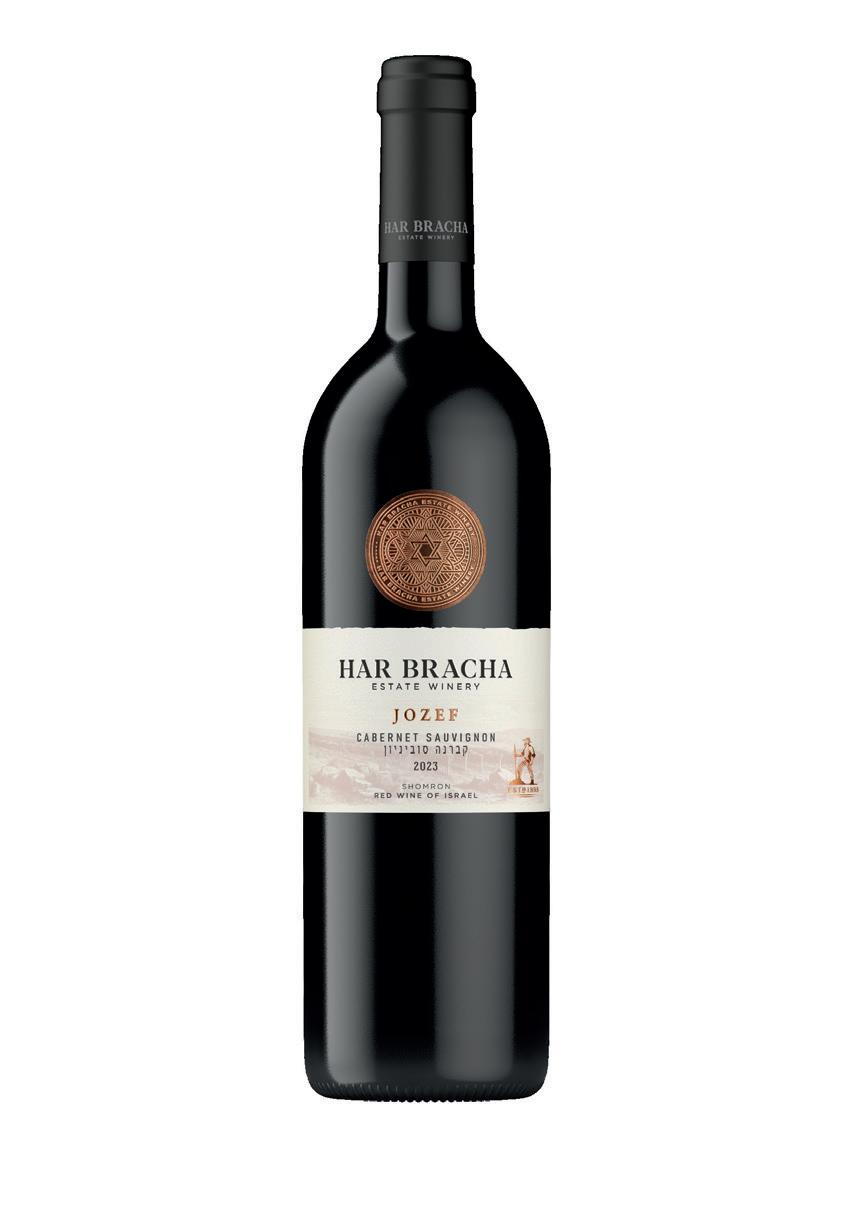
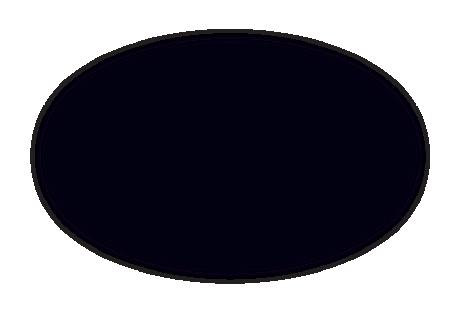



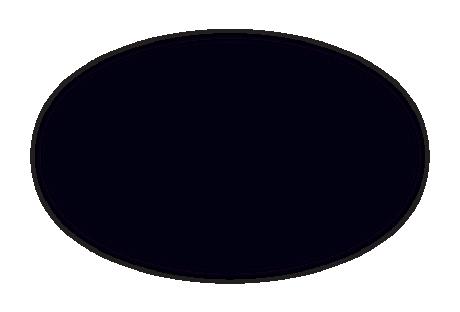



A T A G L A N C E
NCSY Israel is the premier youth group for English-speaking teens grades 912 living in Israel with the goals of promoting personal religious growth and a deeper connection to Israel. A unique model among youth groups in Israel, NCSY Israel serves the teen population by providing college-aged madrichim and madrichot who have completed army or national service. Both local events within our chapters and larger events which bring people together from all across the country, enable teens to build relationships with NCSY Israel staff who provide consistent guidance and support.





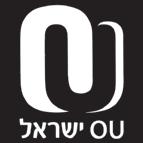
4 CUPS OF WINE












38 OU CERTIFIED ISRAELI WINERIES TO CHOOSE FROM







4











